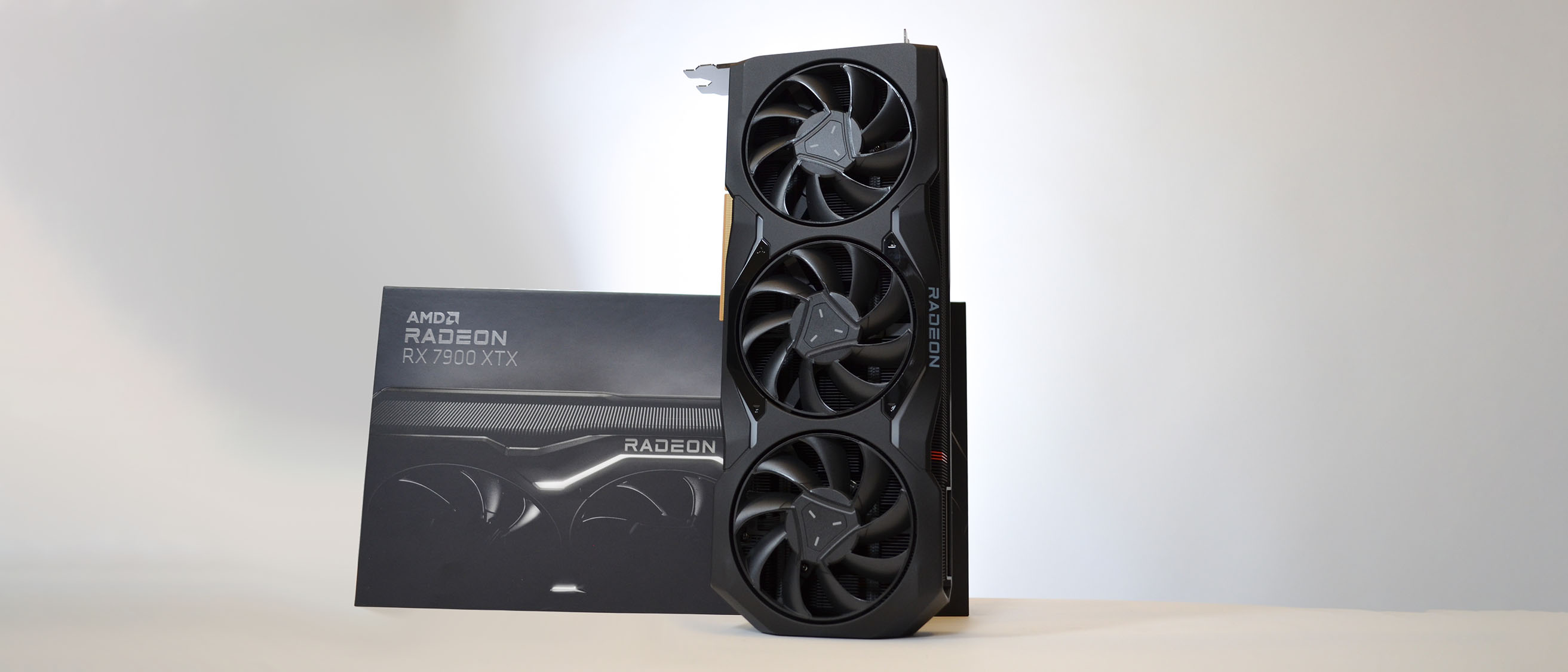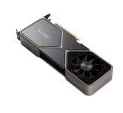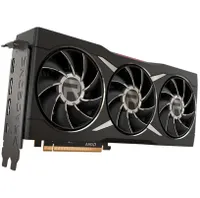TechRadar Verdict
AMD had an enormously high bar to clear with the AMD Radeon RX 7900 XTX, and it successfully pulls off a major upset against Nvidia's rival RTX 4080 in all the ways it needed to. It isn't always the better graphics card in this test or that test, and its ray tracing ability lags behind the RTX 4080 (not to mention its creative performance), but between its outstanding overall performance and its very competitive price point, it is exactly the kind of enthusiast graphics card that our current moment calls for.
Pros
- +
Phenomenal performance
- +
Perfectly priced
- +
Can fit in most cases
- +
No 16-pin connector
Cons
- -
Just OK creative workload performance
- -
Ray tracing remains a generation behind Nvidia's latest
- -
Power hungry
Why you can trust TechRadar
AMD Radeon RX 7900 XTX: Two minute review
The AMD Radeon RX 7900 XTX is here to chew bubble gum and kick ass – and it just stole the Nvidia RTX 4080's bubble gum.
To say AMD had a high bar to clear with its latest flagship graphics card is an understatement. Having lagged Nvidia for the past few years and being relegated to the graphics card you have to buy because you don't have the money to buy the one you actually want, AMD has finally dropped a graphics card that isn't just the equal of Nvidia's rival GPU, it delivers a technical knockout that no one was expecting – all while costing substantially less.
Taken together, the RX 7900 XTX and Nvidia RTX 4090 cut off any real reason to buy the Nvidia RTX 4080. This isn't entirely AMD's doing, as Nvidia's missteps with the RTX 4080 have significantly undercut it in ways that might not be repairable this generation.
But knowingly or not, AMD positioned itself perfectly to exploit these mistakes, and – just like that – it finds itself coming to market with a flagship graphics card under $1,000 just as frustrated gamers who've been unable to upgrade their rigs thanks to scalpers and cryptohogs are finally – finally – ready to say goodbye to their old GTX 1060s and splurge on a new GPU for their gaming PC.
This card delivers what we gamers have been looking for right when we thought we'd never see its like again.
Without question, the RX 7900 XTX is the card that they should buy. AMD's second-generation Ray Accelerators are a huge improvement over RDNA 2's inaugural ray tracing hardware, and with FSR 2.0 coming into its own as an upscaling tech, getting 4K gaming with ray tracing at high frame rates on a Radeon card is now a reality. It will even give the best 4K monitors with high refresh rates a workout in ways its predecessors could only dream of.
Add to that the capacity for fast 8K gaming thanks to ample VRAM and DisplayPort 2.1 and you've got a GPU that not only delivers great performance right now, but you also have one that is better positioned than Nvidia's RTX 4080 and even the RTX 4090 for the 8K future as more 5K and 8K monitors start to hit the market in the next couple of years.
In the end, for this and other reasons we'll dig into in more detail further down, the AMD Radeon RX 7900 XTX is the best graphics card for gamers who live in something resembling reality – gamers with real jobs that don't pay the kind of money that makes something like the RTX 4090 an impulse buy and who have to look at the 4090's nearly half a kilowatt of power usage and wonder if they could even afford the electric bill that comes with that.
Sign up for breaking news, reviews, opinion, top tech deals, and more.
There are going to be things you might miss out on by going for this card — and Lord knows, AMD hasn't always had the best track record when it comes to drivers — but we live in a world rife with everyday trade-offs, and right now the RX 7900 XTX gets far more right than Nvidia's competing RTX 4080.
The AMD Radeon RX 7900 XTX is still a premium GPU though, and its $999.99 MSRP is literally as close as you can get to "under $1,000" without committing fraud, but by at least attempting to meet enthusiast gamers halfway-ish while not asking them to compromise gaming performance in exchange, this card delivers what we gamers have been looking for right when we thought we'd never see its like again.
AMD Radeon RX 7900 XTX: Price & availability

- How much is it? $999.99 / £899 / AU$1,789
- When is it out? December 13, 2022
- Where can you get it? Available in the US, UK, and Australia
The AMD Radeon RX 7900 XTX is available starting December 13, 2022, for a US MSRP of $999.99. It will start at £899 in the UK and AU$1,789 in Australia. This is just for the AMD reference card, and other AMD board partners like XFX, Gigabyte, and others will likely charge more than this.
Still, this puts the RX 7900 XTX on par with the US MSRP of the AMD Radeon RX 6900 XT, which also launched for $999.99, and it is actually cheaper than the card it is presumably replacing, the AMD Radeon RX 6950 XT, which had an MSRP of $1,099 (about £880, AU$1,580).
Most important of all though, it comes in $200 cheaper than the Nvidia RTX 4080 it is directly competing against, which is an undeniable advantage right now as consumers everywhere stare down uncertain economic times in the coming year.
The RX 7900 XTX is also $100 more expensive than the RX 7900 XT, which launches alongside the 7900 XTX and has slightly cut-back hardware for a more upper-mainstream consumer rather than the outright Team Red enthusiast. It will be a little while yet before we'll have any AMD cards to add to our best cheap graphics card list, but they are definitely coming, and setting the price ceiling on RDNA 3 at $999.99 is an encouraging sign.
Is asking $999.99 a lot for a gaming graphics card? It absolutely is, and it's very hard to rate a $1,000-minus-a-penny graphics card as a great "value" in absolute terms. But this is unquestionably the best AMD graphics card ever made, and possibly its most important, considering how Nvidia seems hell-bent on increasing prices to the absolute limit of what the market will tolerate. Having a premium flagship release from AMD come in at the same price as its predecessor and undercutting Nvidia's rival card by $200 and outperforming its rival as a gaming graphics card is an unqualified coup for AMD.
It might even be enough to drive down the price of the RTX 4080 to boot, so even Team Green partisans may have to grudgingly thank AMD for reining in Nvidia's price inflation.
- Value: 4 / 5
AMD Radeon RX 7900 XTX: Features & chipset

- First GPU utilizing chiplet design
- Second-gen Ray Accelerators significantly improved
- 24GB VRAM and DisplayPort 2.1 makes fast 8K gaming at least possible
GPU: Navi 31
Stream Processors: 6,144
AI Accelerators: 192
Ray Accelerators: 96
Power draw (TGP): 355W
Base clock: 1,900MHz
Boost clock: 2,500MHz
VRAM: 24GB GDDR6
Bandwith: 960GB/s
Bus interface: PCIe 4.0 x16
Outputs: 1 x HDMI 2.1a, 2 x DisplayPort 2.1, 1 x USB Type-C
Power connector: 2 x 8-pin
The AMD Radeon RX 7900 XTX is AMD's flagship graphics card, running on the company's 5nm Navi 31 GPU, but there's more to it than just the chip. Rather, we need to talk about chiplets, meaning that there isn't one die in the graphics card but several, with the main compute die using TSMC's 5nm node and its cache memory dies using a 6nm process with extremely fast interconnects.
This compartmentalized architecture isn't new but it's one that AMD has invested in pretty heavily in its Ryzen and EPYC processors. This might be a large part of the reason why AMD was able to keep this card under $1,000, since the 5nm node is more expensive than the 6nm node.
By using an older TSMC process to fab dies that don't really need the kind of performance that 5nm allows for, AMD is using exactly as much of the more expensive die as it needs to without wasting that more precious silicon on a component that doesn't really need that it.
Similarly, AMD is using GDDR6 VRAM, rather than the GDDR6X video memory found in the RTX 4090 and RTX 4080, but by utilizing faster interconnects on the die and interfaces with the memory chiplets, along with roughly 22MB more cache memory than the RTX 4080, it is able to attain a higher memory bandwidth than the RTX 4080, which neutralizes Nvidia's advantage when going with GDDR6X, at least on paper.
There are also second-generation Ray Accelerators at work in the RX 7900 XTX, which significantly improve on AMD's real-time ray tracing capability to the point that the second-generation Ray Accelerators in the RX 7900 XTX outperform the ray tracing capabilities of Nvidia's second-generation RT cores in the RTX 3090, which is quite a feat considering what a beast the RTX 3090 was and still is.
For gamers who have been starved of an "affordable" ray-traced 4K gaming experience, FSR is more than a match for the job.
AMD has also introduced new AI Accelerator cores, which are somewhat comparable to Nvidia's Tensor Cores that perform complex calculations essential to tasks like ray tracing and machine learning. But just like RDNA 2 introduced the first generation of AMD Ray Accelerators that fell far short of what Nvidia's RTX 3000-series cards were achieving, these AI Accelerators are going to need another generation or two to fully mature.
Considering that Nvidia is on its fourth generation Tensor cores with Nvidia Lovelace, AMD has a long way to go before it can match what Nvidia offers, especially for creative and research workloads which lean very heavily on these cores.
Finally, it's worth noting that when we reviewed AMD's RDNA 2 graphics cards, the biggest hurdle was AMD lacked an answer to Nvidia's DLSS upscaling tech. This put it at a substantial disadvantage when it came to the actual gaming experience of the average player.
That is no longer the case, as AMD released FSR 2.0 last year and it continues to roll out new updates to the tech as more games incorporate it into their builds. And while it's not nearly as good as DLSS 3 with its frame generation technology, for gamers who have been starved of an "affordable" ray-traced 4K gaming experience, FSR is more than a match for the job.
- Features & Chipset: 4.5 / 5
AMD Radeon RX 7900 XTX: Design

- Smaller than the RTX 4080
- Only uses two 8-pin connectors
- USB Type-C output
There are also a number of design features of the RX 7900 XTX that are worth noting and even praising.
For starters, the RX 7900 XTX is smaller than the RTX 4080, and by quite a lot. At just 11.3-inches (287mm) long and two inches (51mm) thick, the RX 7900 XTX takes up a lot less room in the typical PC case than the 12.2-inch (310mm) long and 2.4-inch (61mm) thick RTX 4080.
The RX 7900 XTX also just looks better than its predecessor, which really wasn't the prettiest of graphics cards (at least not AMD's reference RX 6900 XT anyway).
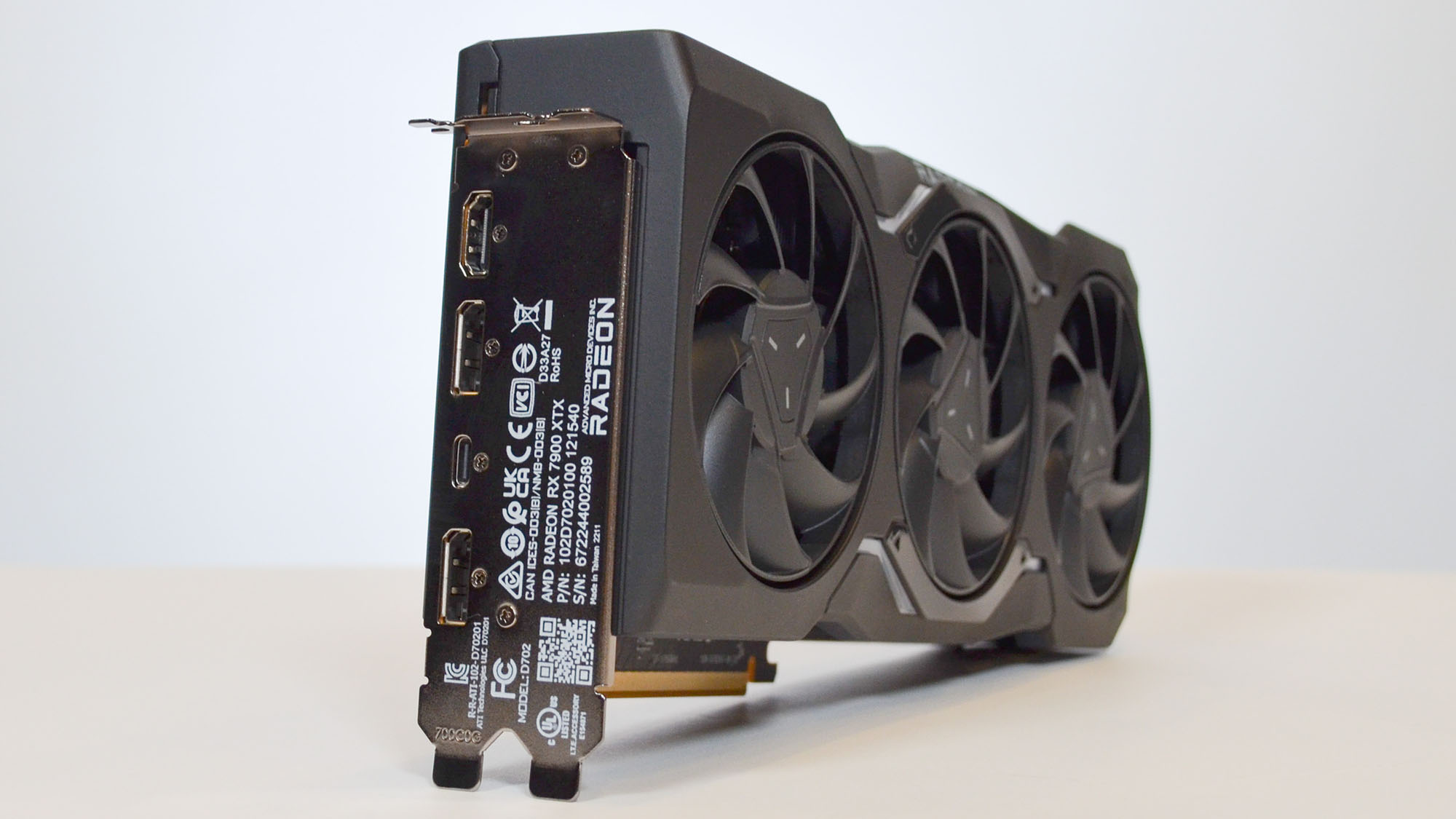
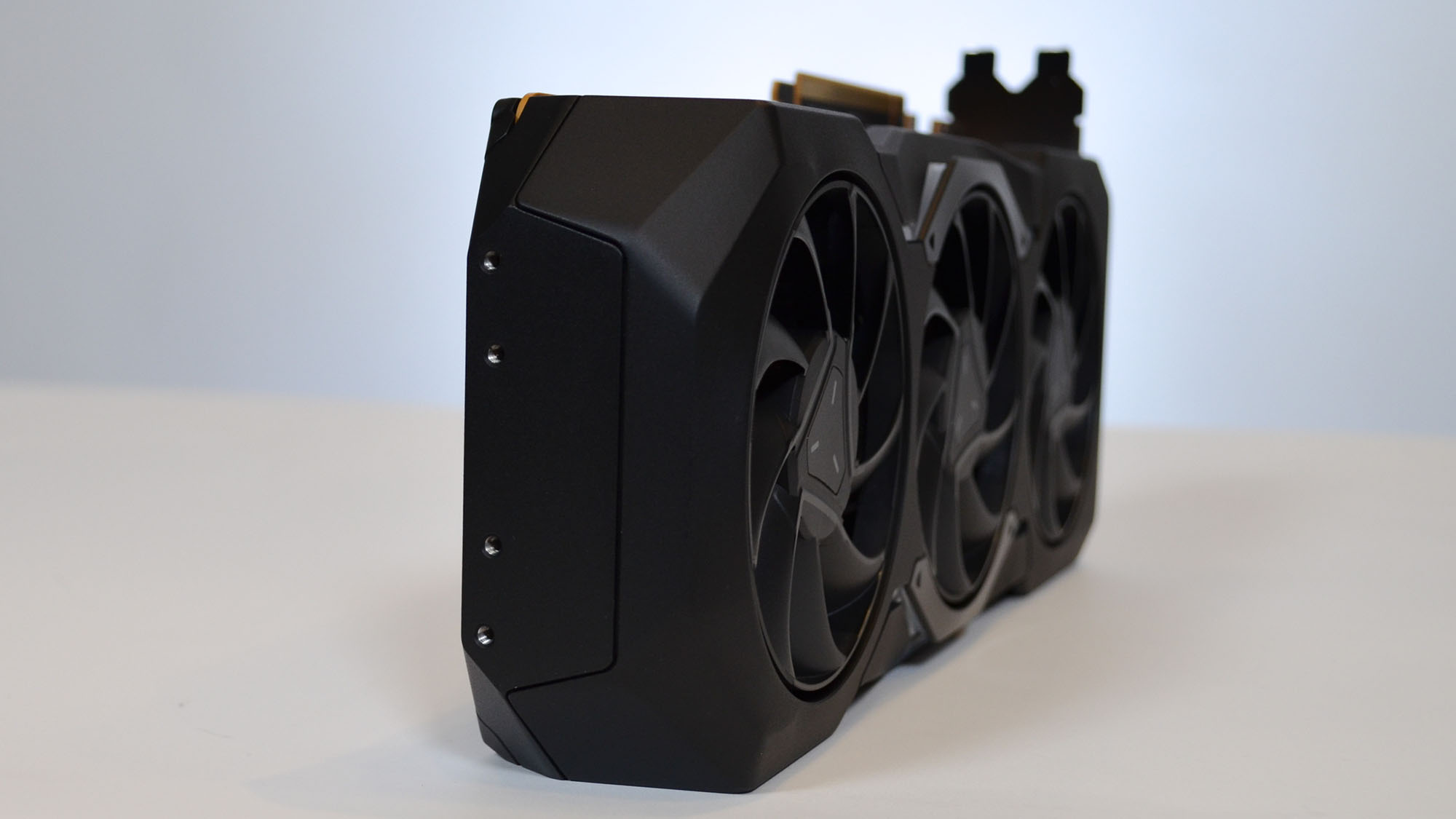
The RX 7900 XTX sports a design featuring a solid and substantial-feeling metal shroud containing the GPU's heatsink and triple-fan cooling solution with the Radeon imprint along the top. It has unobtrusive accent lighting around the center fan, as well as some capacity on the end of the card for any compatible GPU support brackets to attach themselves to the card itself.
Also worth noting is the simple 2 x 8-pin power connection on top of the card. Drawing just shy of 360W under heavy load, AMD doesn't bother with the 16-pin connector that has besmirched Nvidia's latest releases, and effectively proves that Nvidia probably didn't need the 16-pin either.
Four 8-pin connectors plugged into the RTX 4090 might have been "unsightly" for some, but it's hardly worse than plugging four 8-pins into an adapter and turning the inside of your case into a spaghetti of cables.
The same is especially true of the RTX 4080, which uses a three-8-pin-to-one-16-pin adapter to deliver 320W of TDP, which is 35W less than what AMD gets out of just two 8-pins while managing to sidestep any of the potential issues with these adapters.
We still don't know what exactly the issue with those Nvidia adapters was, nor how widespread the problem was. It appears to have been very limited in scope, but even the possibility that a manufacturer-supplied power adapter could potentially become a fire hazard is an automatic point in AMD's favor simply by default.
One final thing to note as well is the inclusion of a USB Type-C video out port along with the two DP and, one HDMI port. Whether third-party cards will include USB-C output or not, at least the AMD reference card hasn't forgotten about all the gamers who took our advice and bought themselves some of the best USB-C monitors.
- Design: 5 / 5
AMD Radeon RX 7900 XTX: Performance
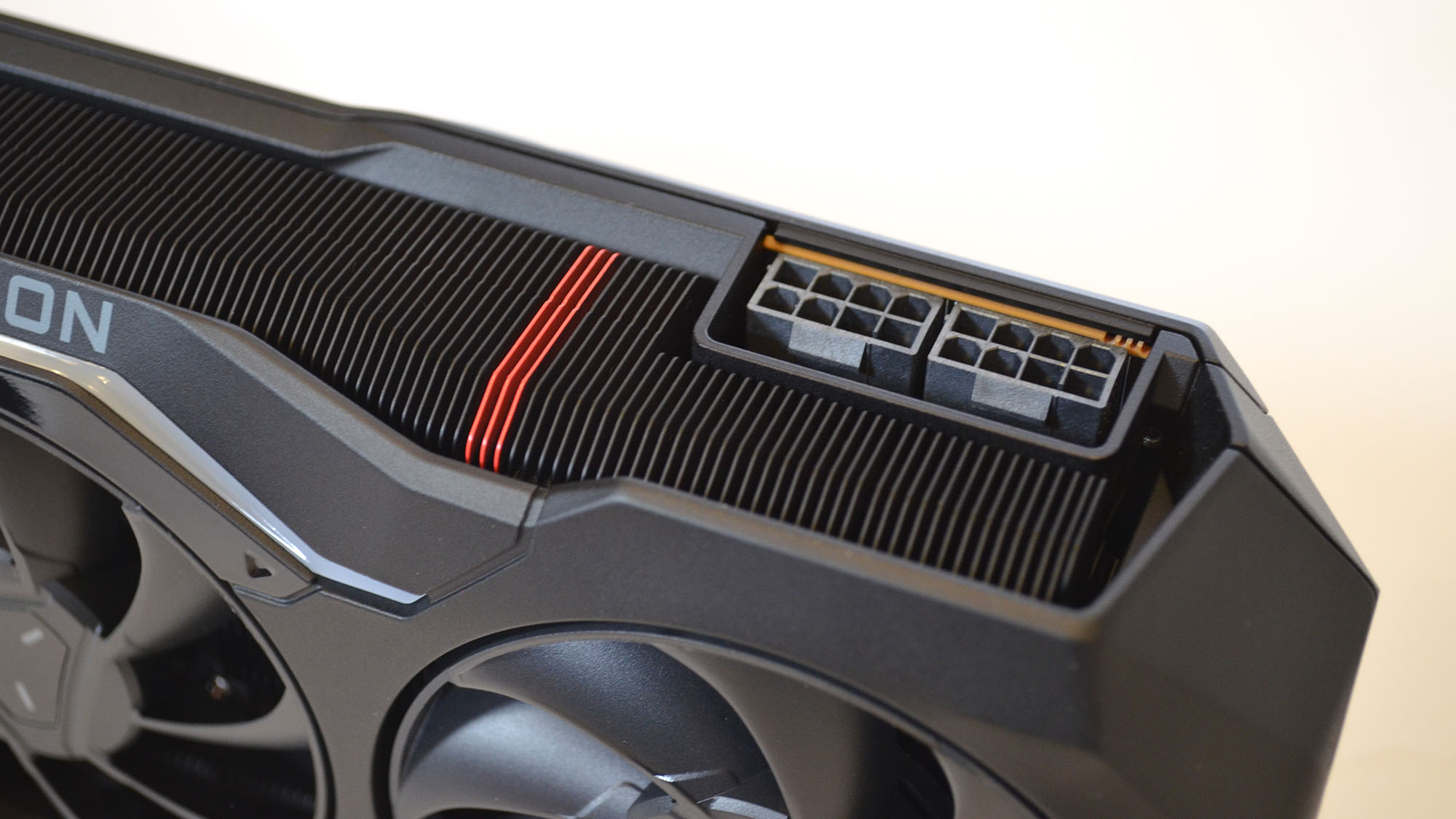
- Ray tracing significantly improved over predecessor
- Outstanding gaming performance
- Creative workloads still lag behind Nvidia substantially
This is the system we used to test the AMD Radeon RX 7900 XTX:
CPU: AMD Ryzen 7 5800X3D
CPU Cooler: Corsair iCue H150i Elite Capellix 360mm AIO
RAM: 64GB Corsair Dominator LED DDR4-3200
Motherboard: Gigabyte Aorus Master X570 (BIOS F36c)
SSD: Samsung 980 Pro 1TB NVMe M.2 SSD
Power Supply: Corsair AX1000
Case: Praxis Wetbench
In the end, it all comes down to performance. All things being as they are, if the AMD Radeon RX 7900 XTX did not deliver the gaming performance that Team Red promised, no amount of price advantage could overcome the hardening of AMD's reputation as the cheaper but less powerful alternative to Nvidia. There's nothing necessarily wrong with buying cheaper goods, but quality – and performance – matters.
And it's here that AMD absolutely sticks the landing. Not perfectly, and not without a ray-traced wobble here or there. But it delivers in a huge way.
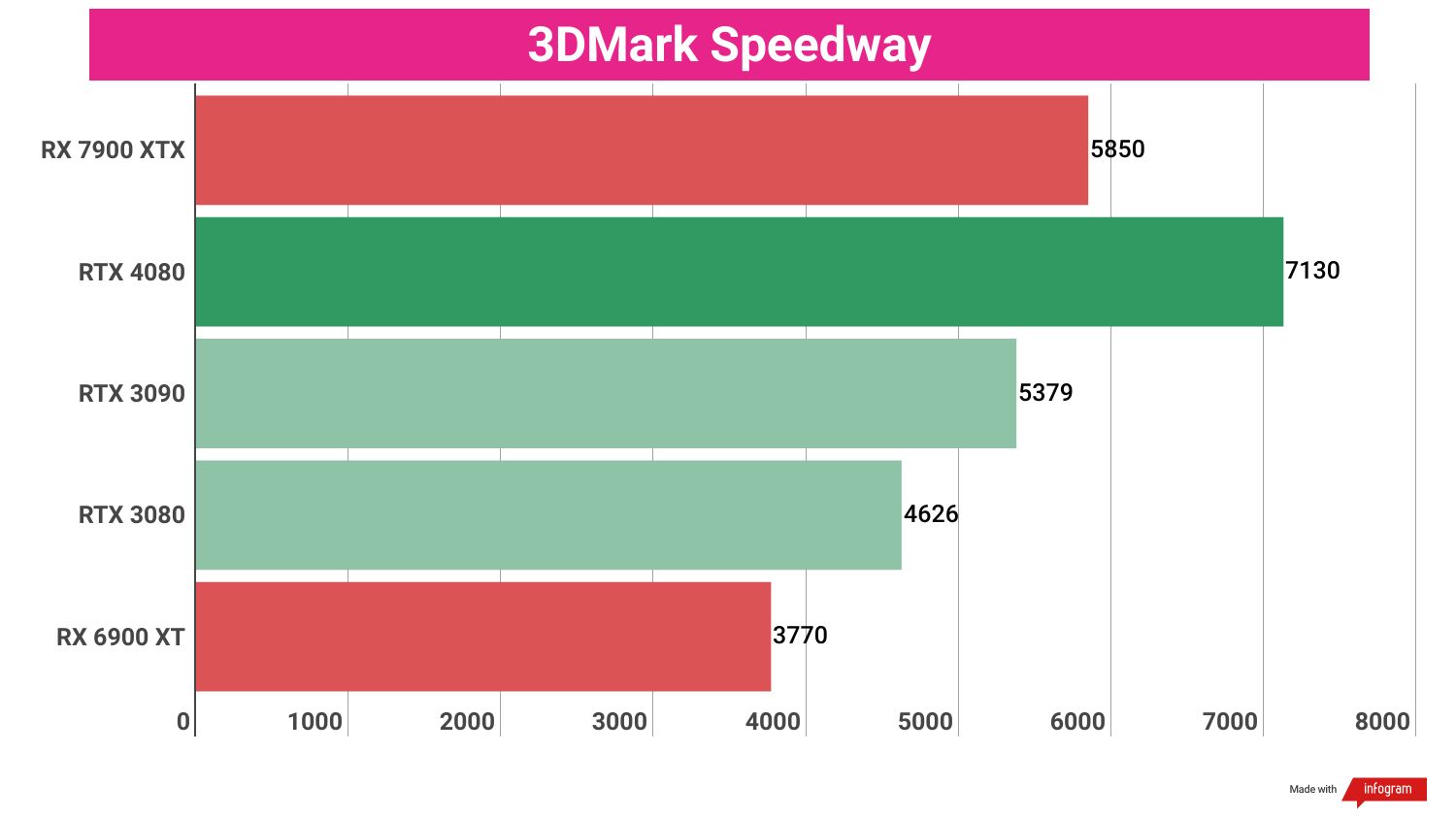
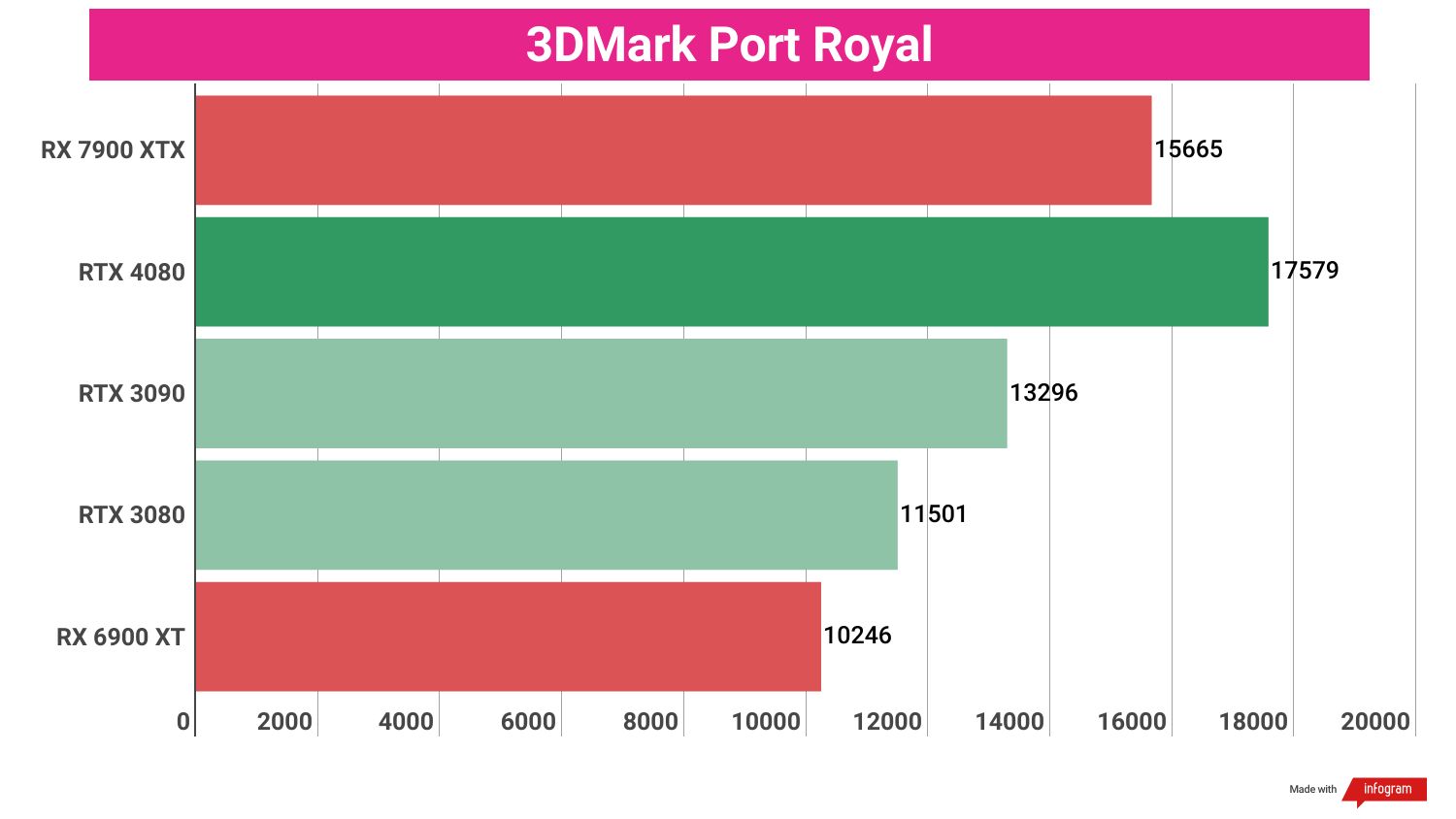
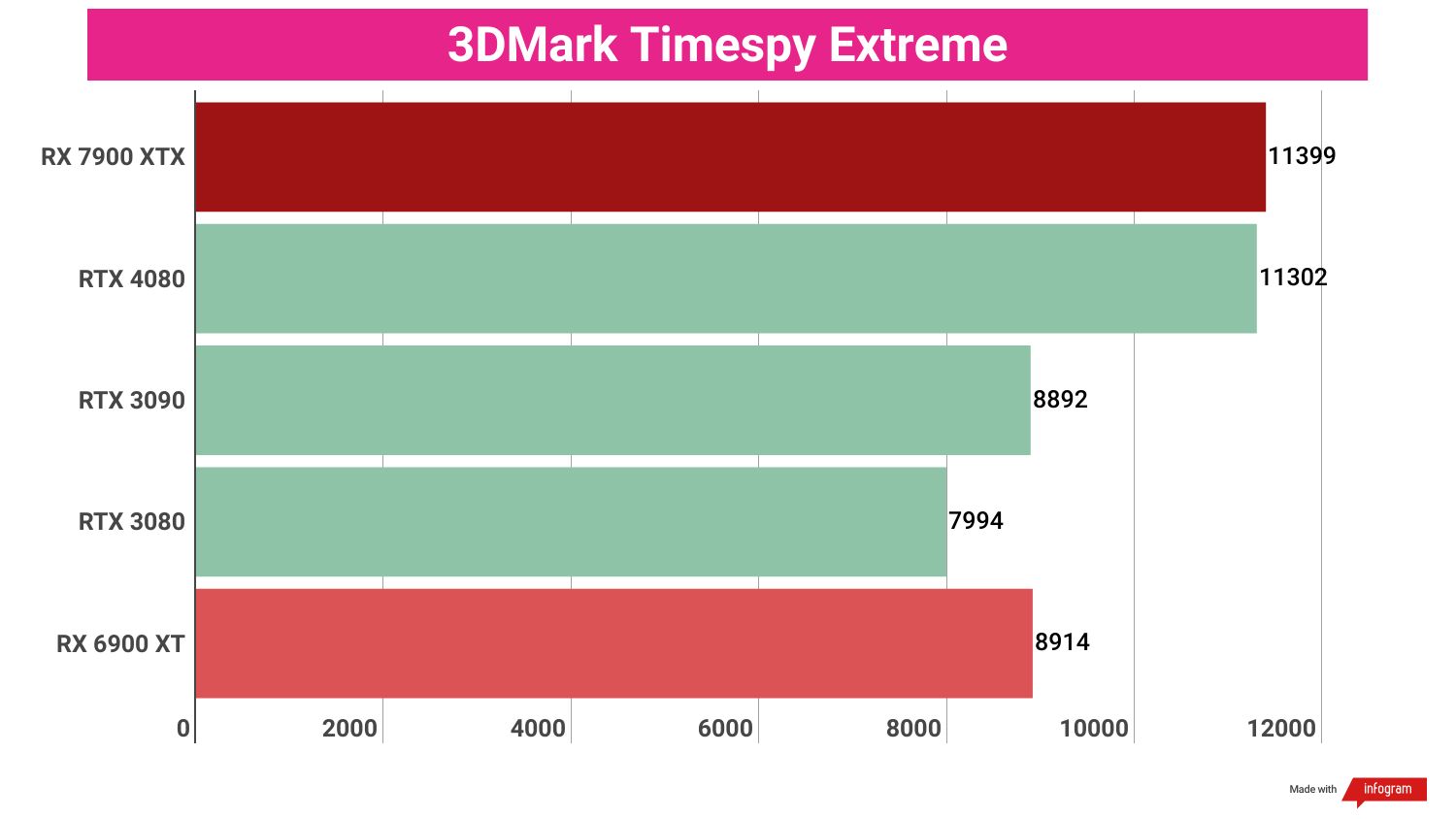
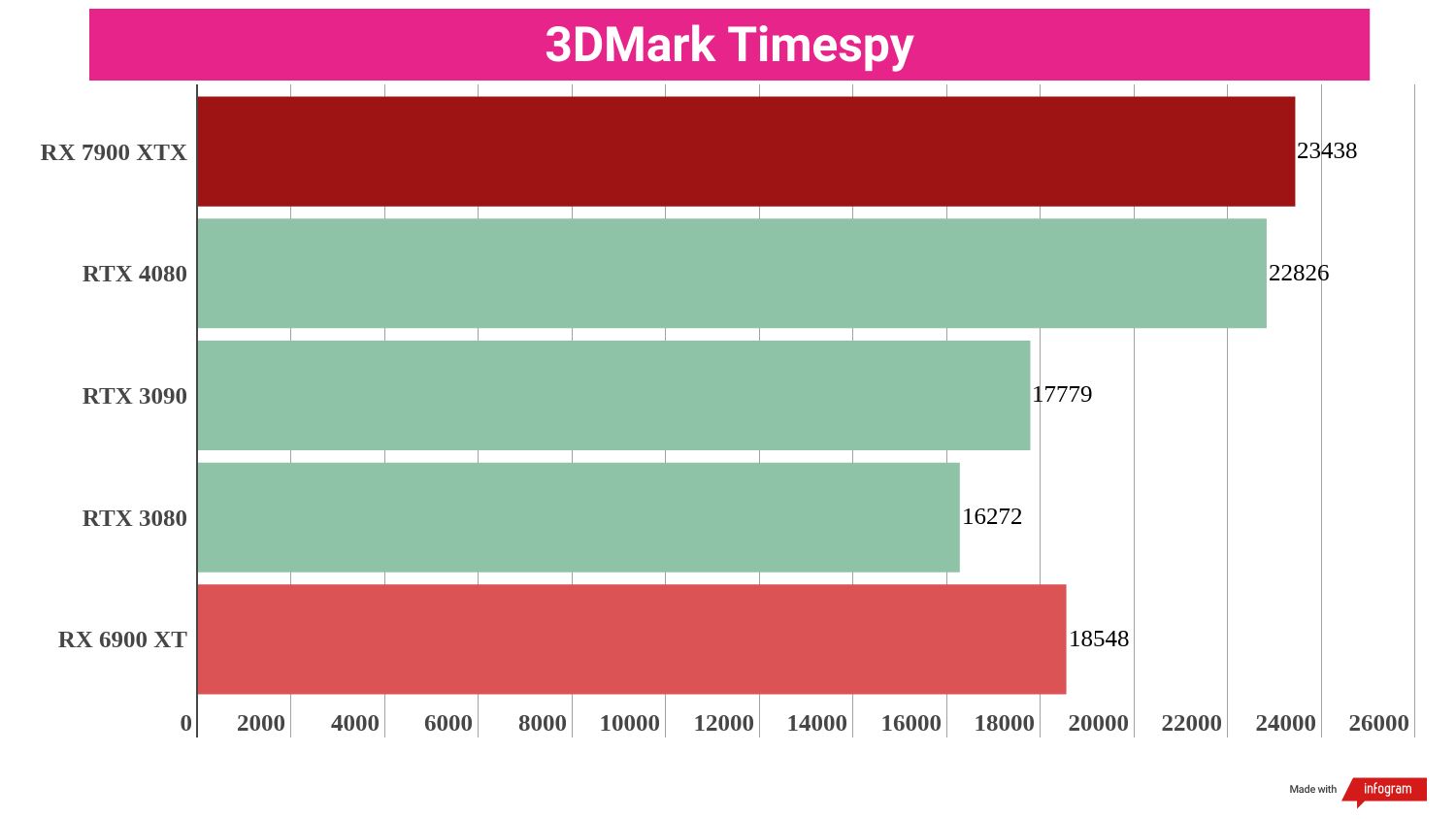
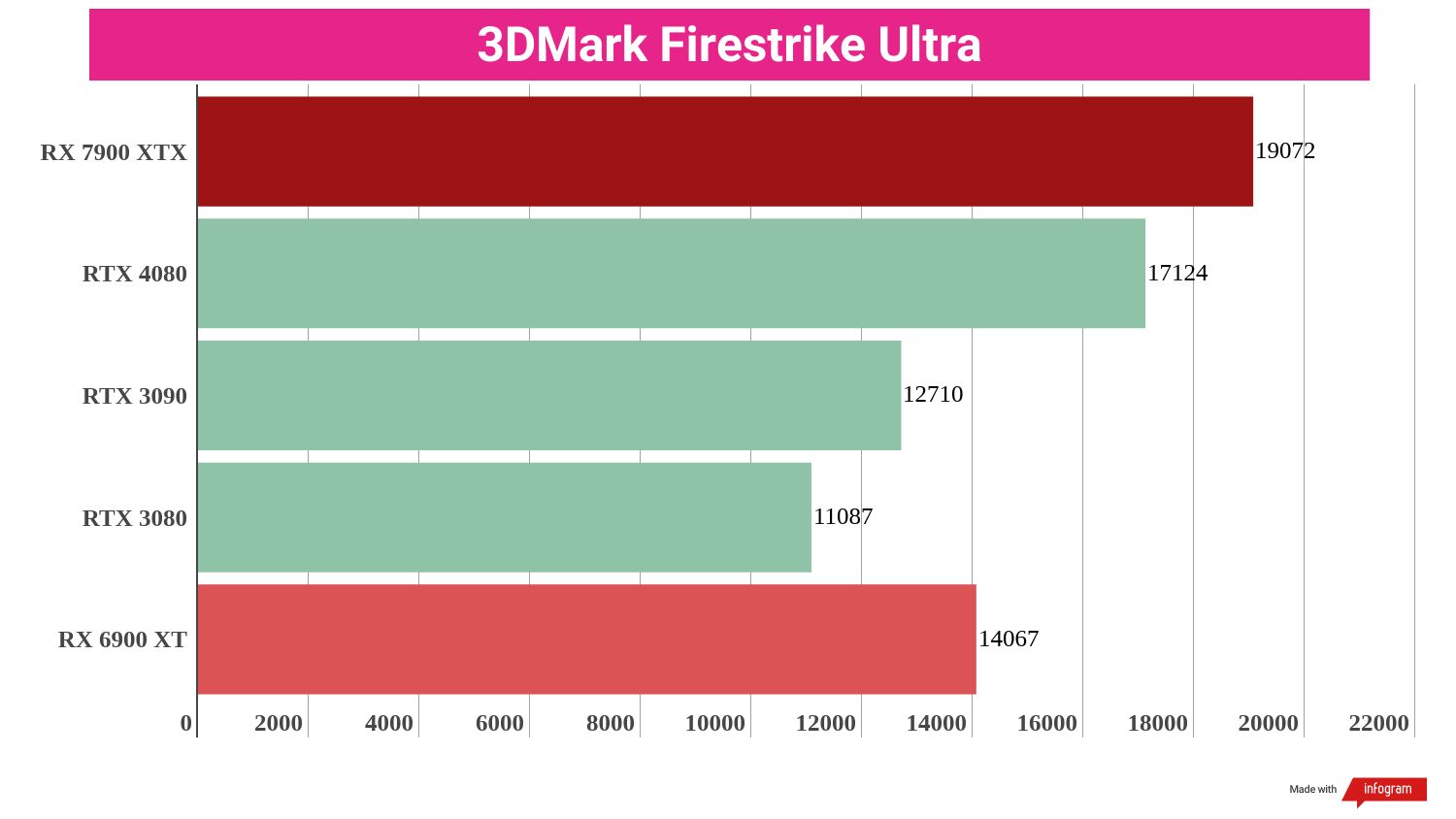
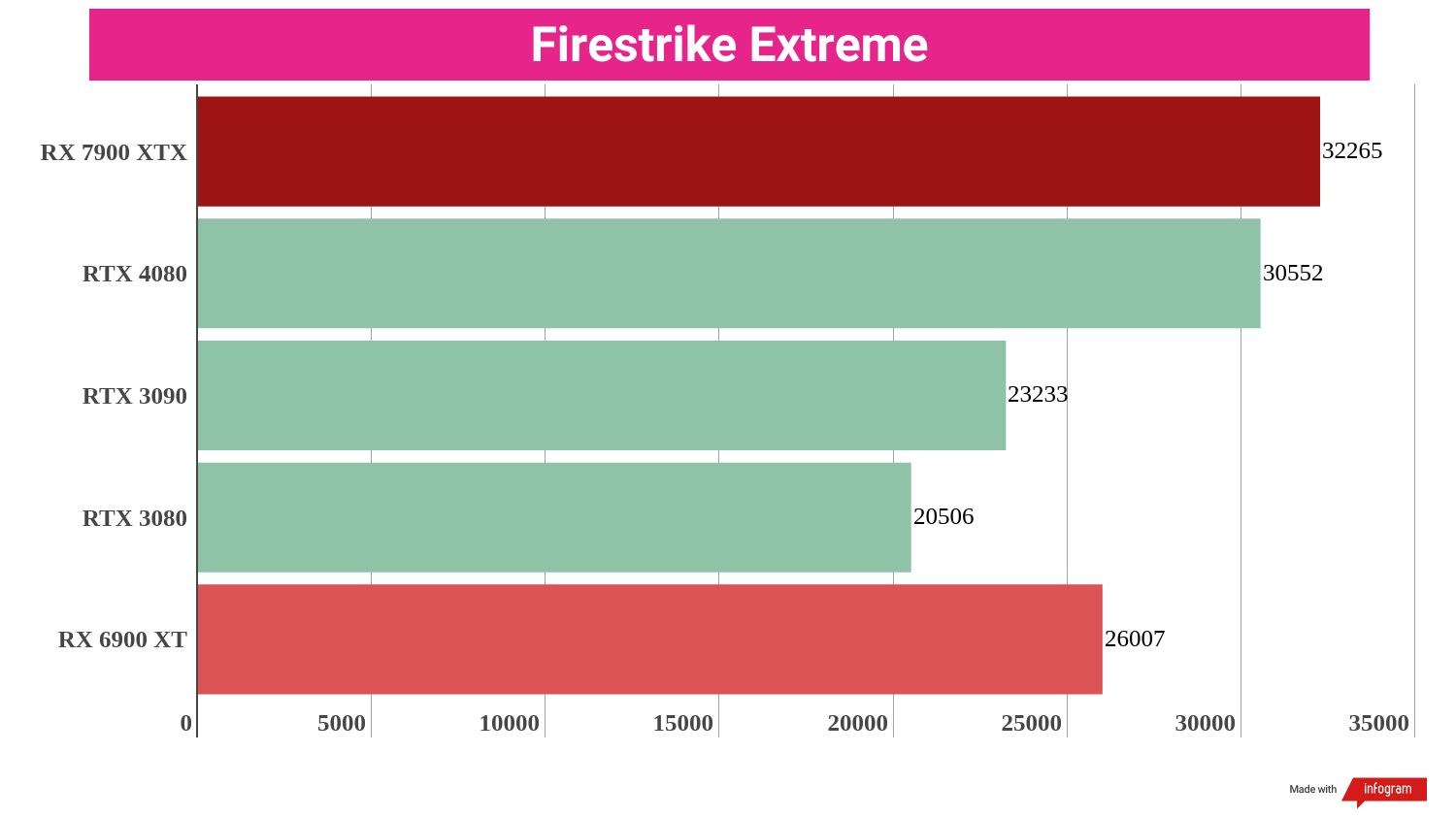
In synthetic workloads using 3DMark, the AMD Radeon RX 7900 XTX lags behind the Nvidia RTX 4080 when it comes to ray tracing-heavy tests, like Speedway and Port Royal. There, the RX 7900 XTX scores about 14.8% lower than the RTX 4080, though it does outperform the RTX 3090. As expected, the RX 7900 XTX scores about 5% better overall than the RTX 4080 in rasterization tasks, even edging out the RTX 4080 at 4K.
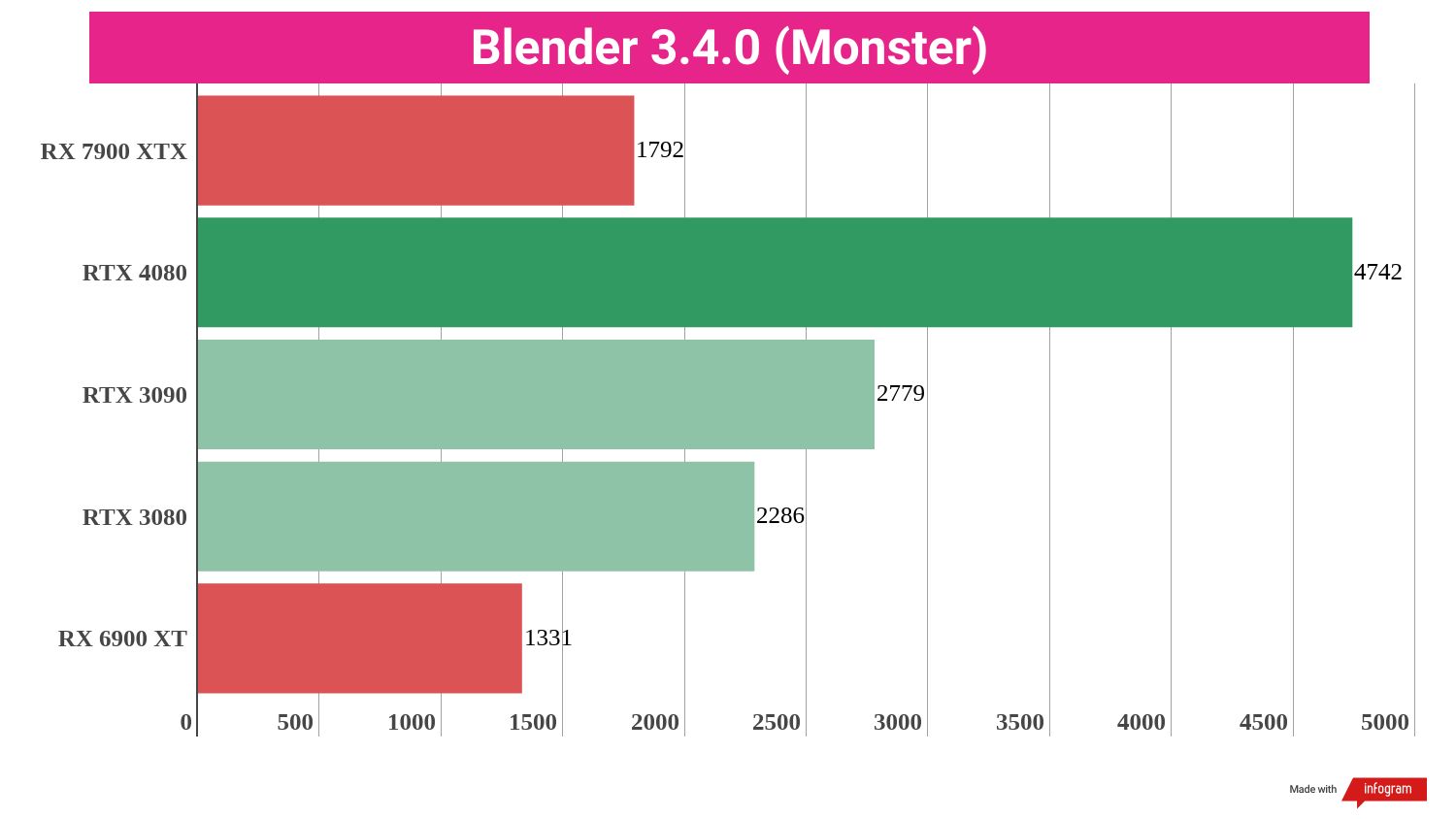
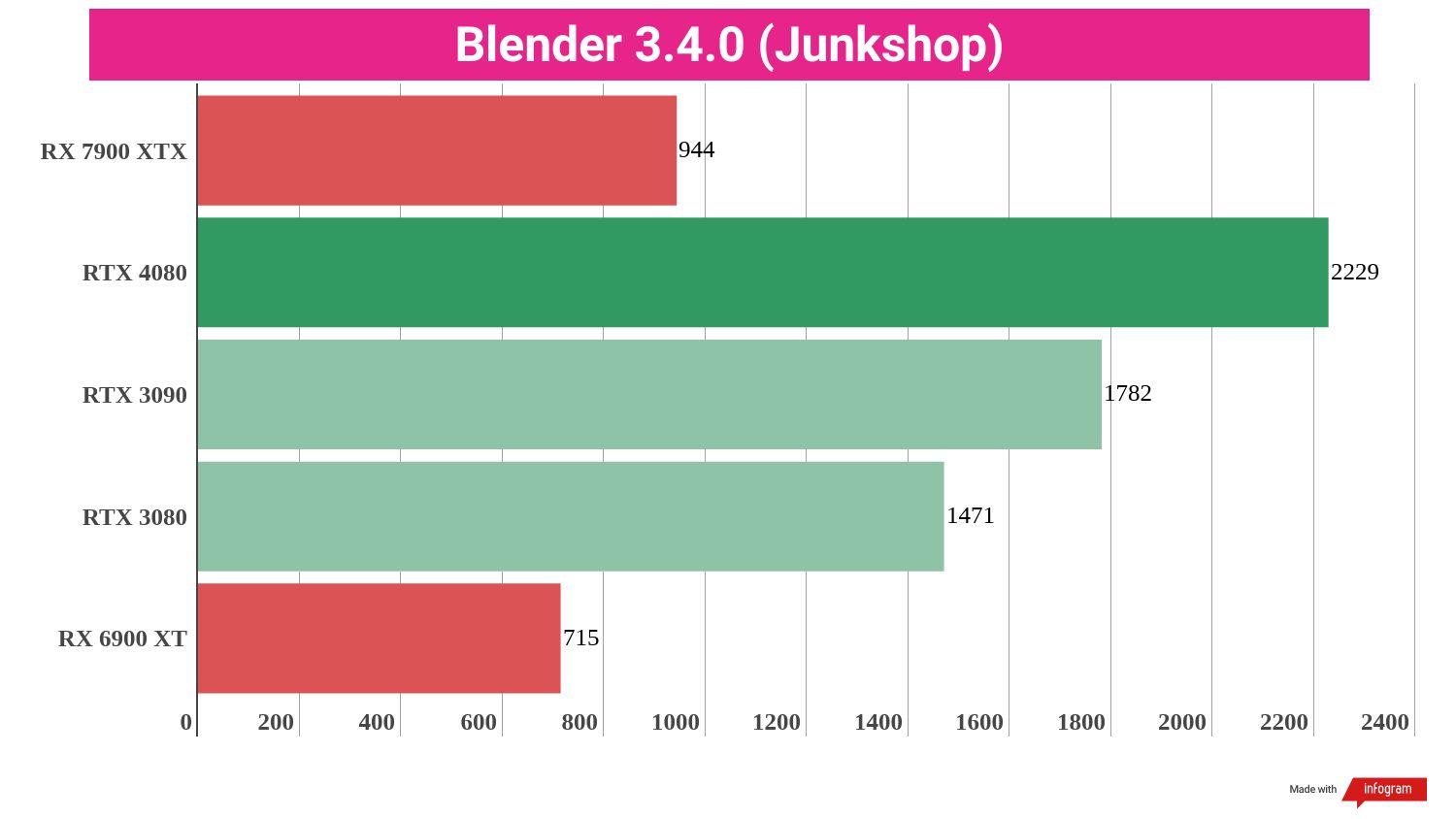
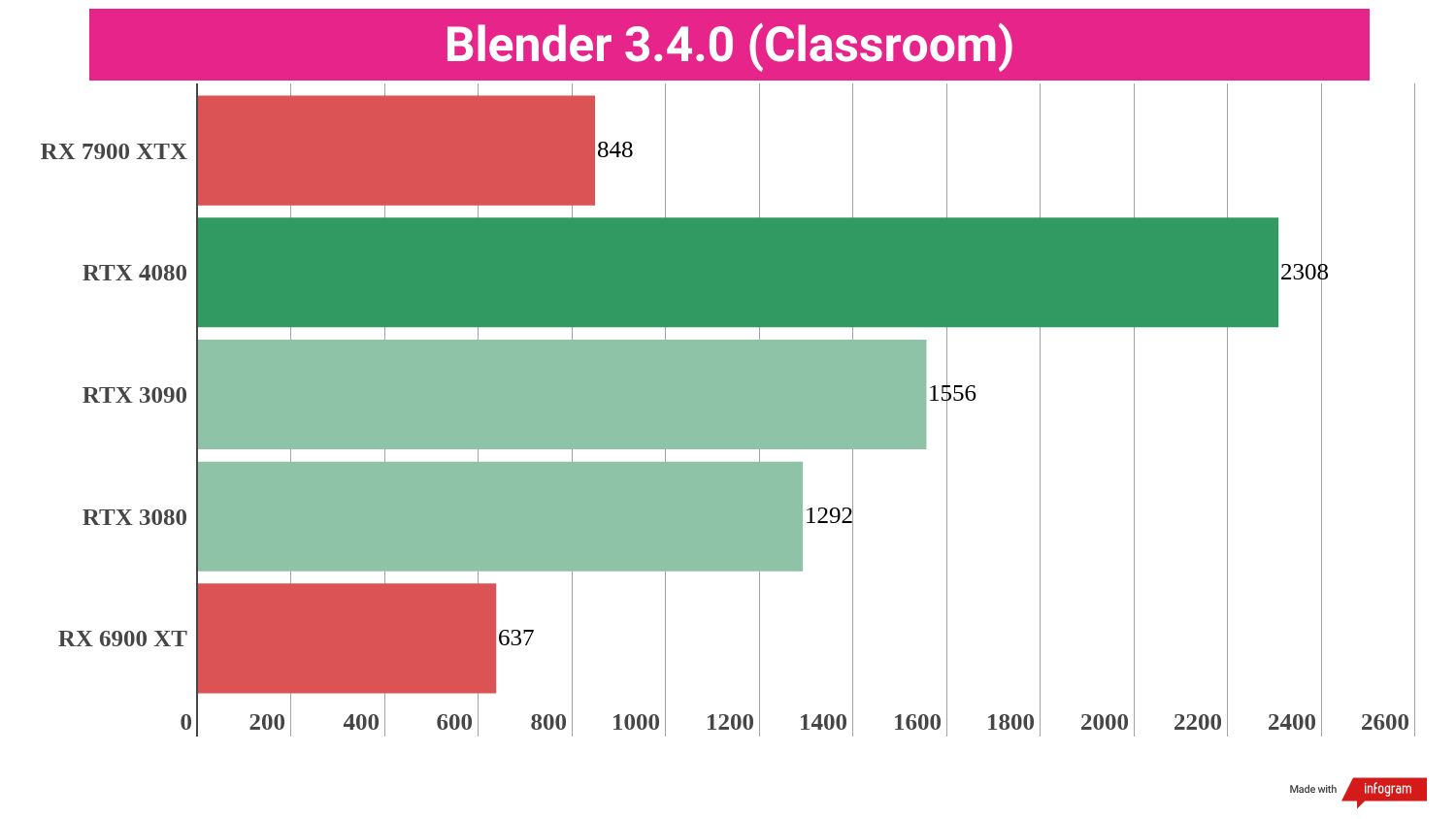
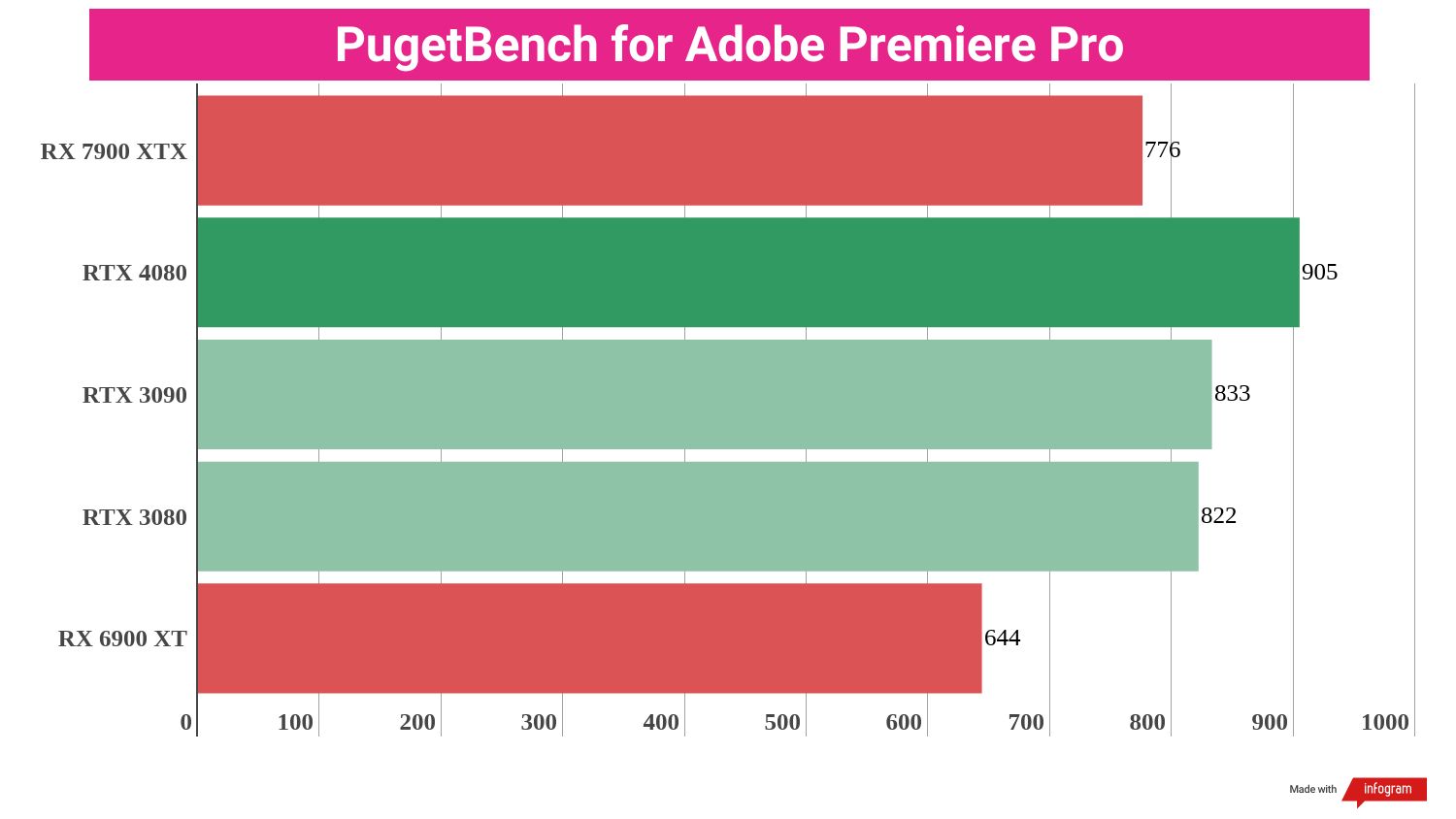
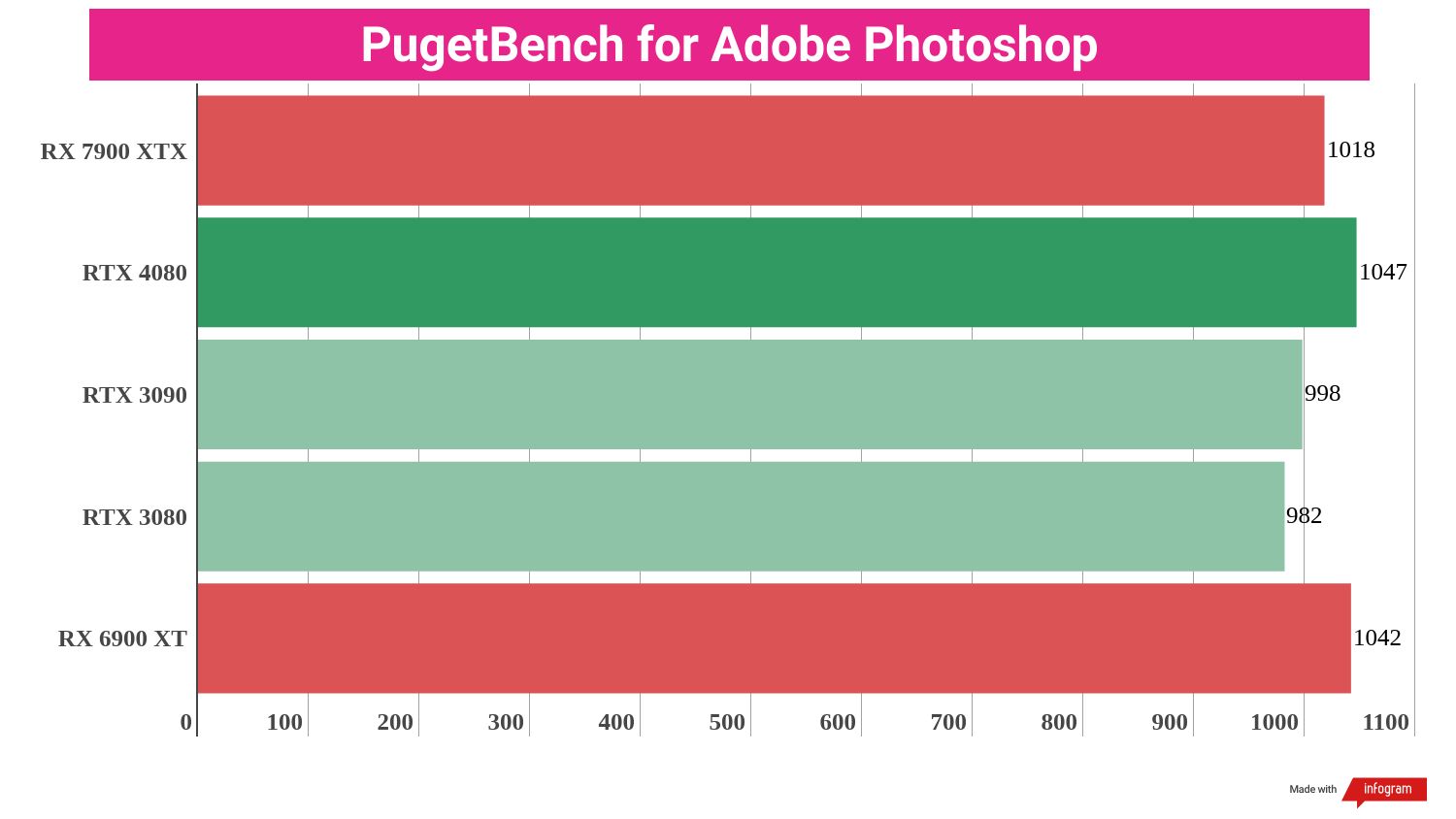

If there is one weakness of the RX 7900 XTX, as we've said before, it's the card's creative performance, specifically those tasks like Blender that are very well optimized for Nvidia's CUDA graphics programming language. AMD says it's working to rewrite the Blender Cycles workloads performed through CUDA in a more open-source language to better leverage AMD hardware, and that these updates should start rolling out with Blender 3.50.
But until then, the RX 7900 XTX just gets crushed in Blender, so if that's your creative workload of choice, you can either take a chance on AMD getting it right in the next couple of updates, or you can just go buy the RTX 4090, which is the true creative professional's GPU. Expense it to the company account, even. That's what those things are there for, right?
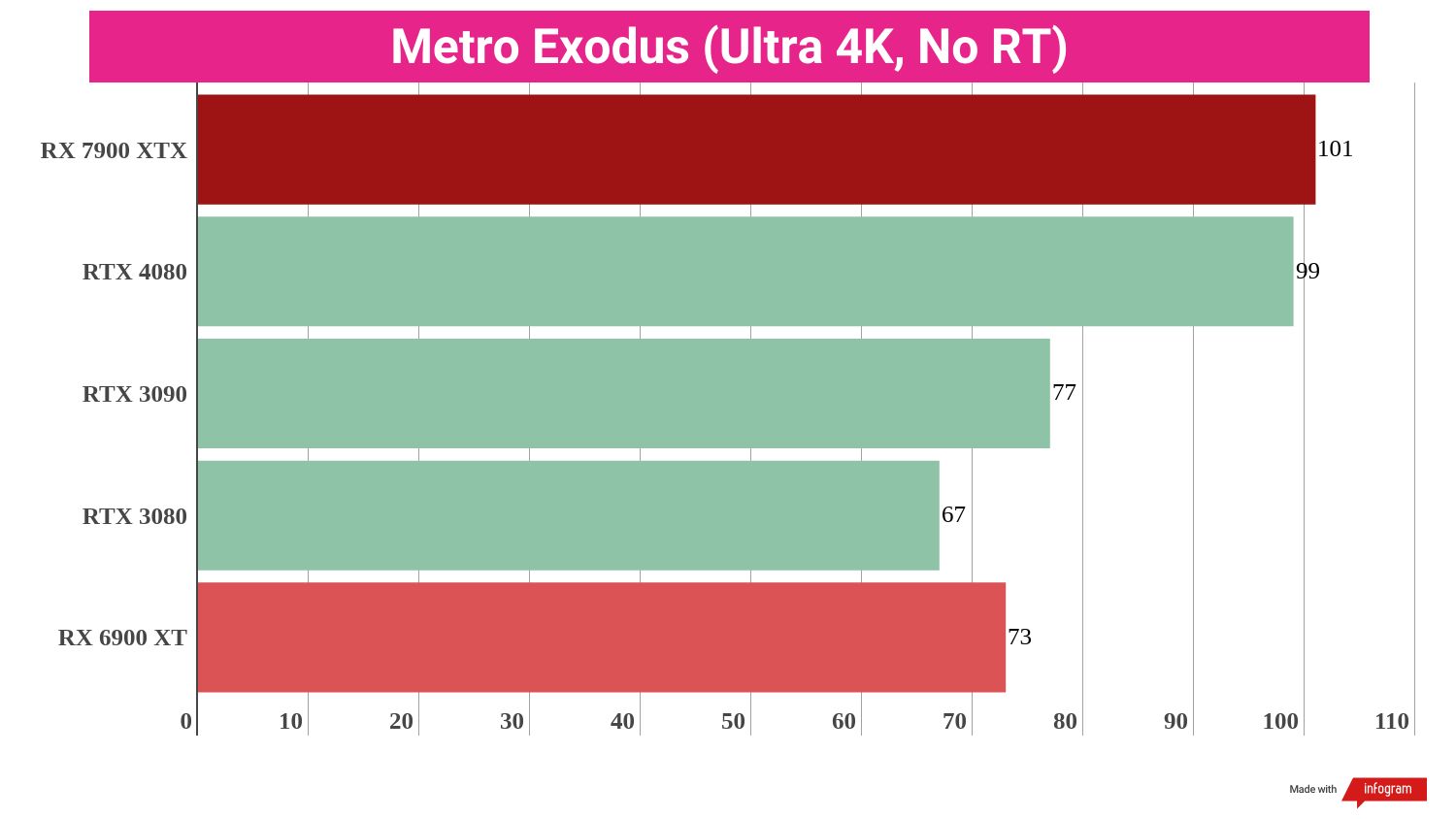


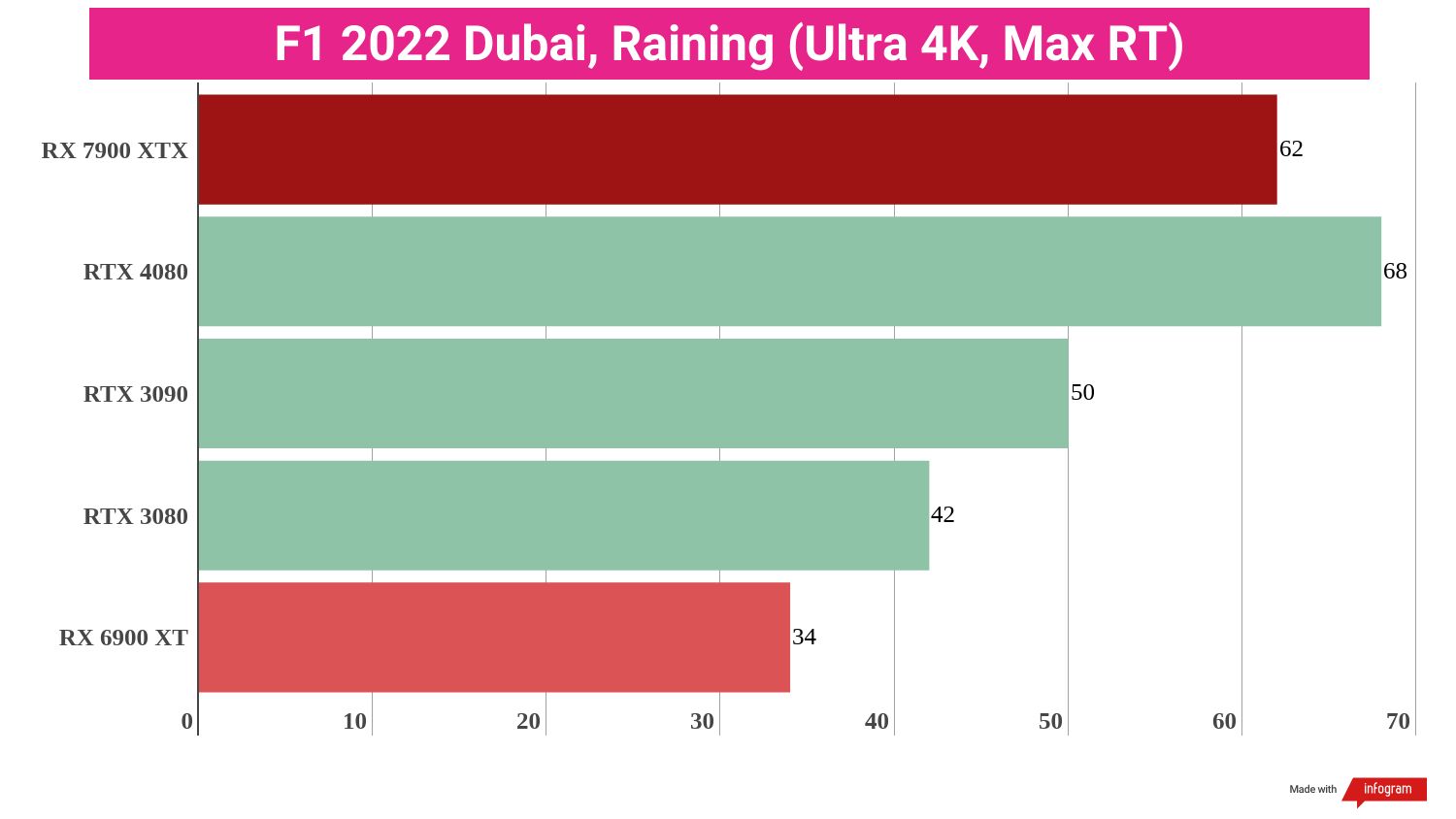



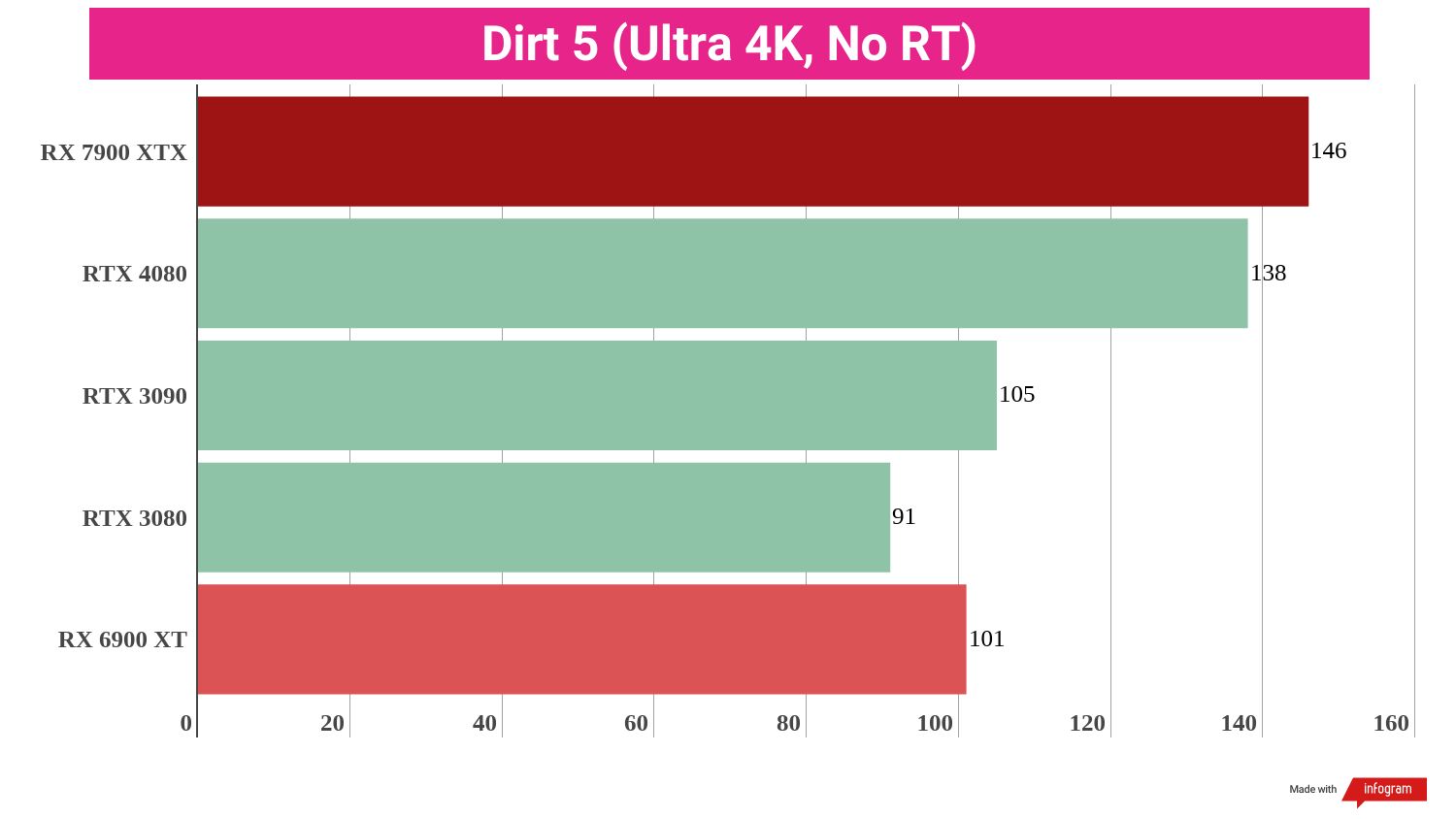




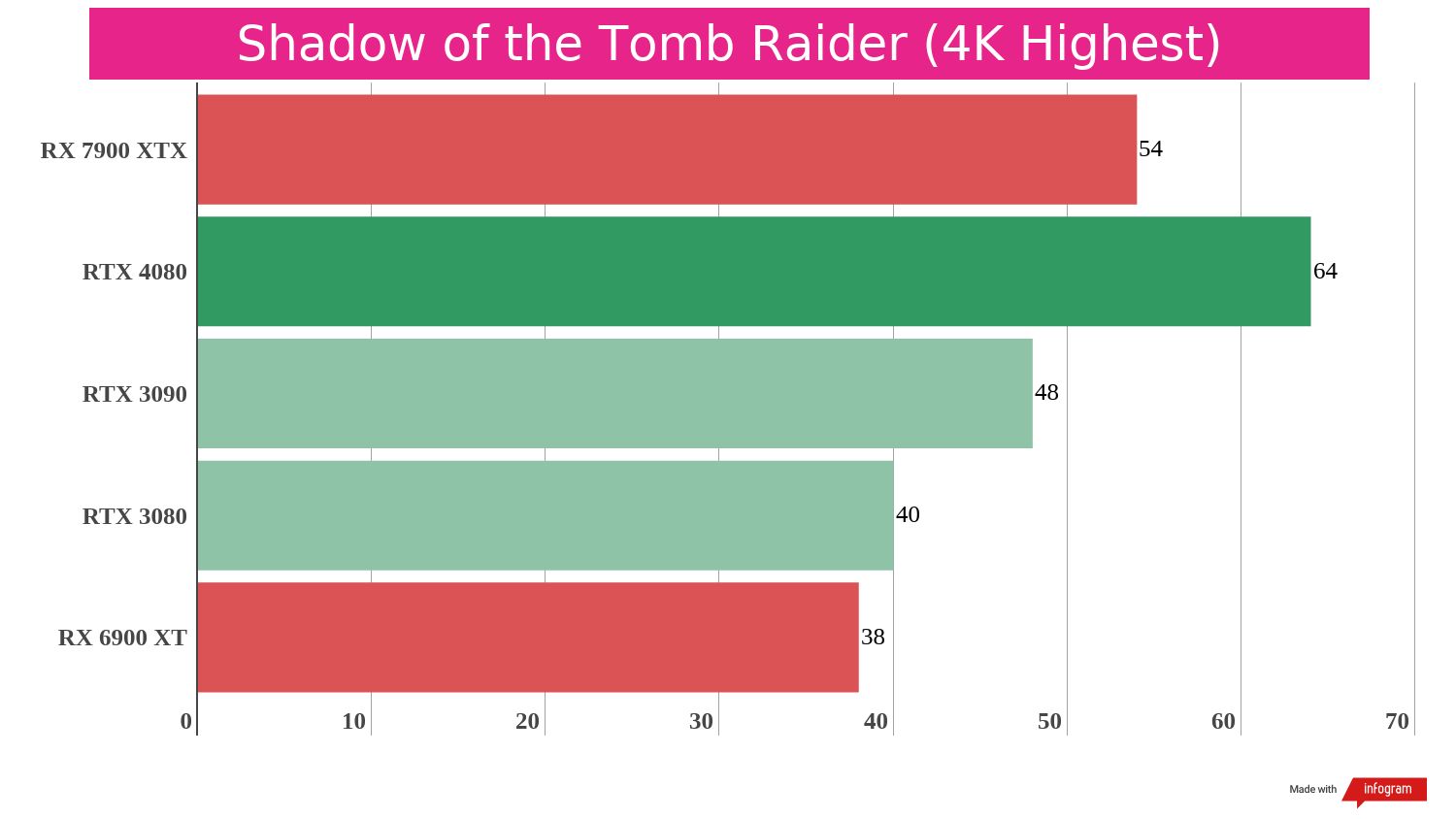

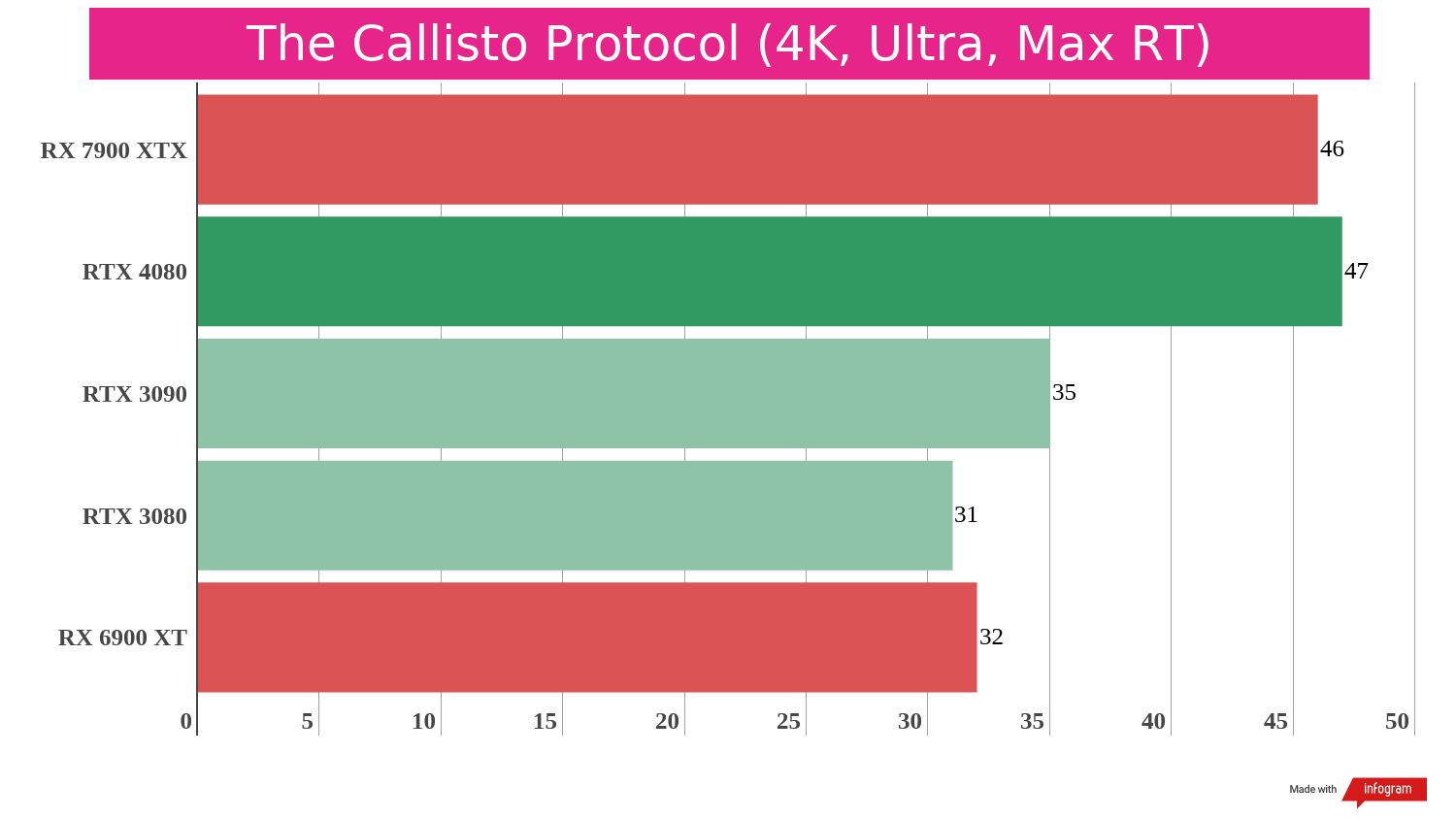
We finally come to what actually matters in the fight between the RX 7900 XTX and RTX 4080, which is gaming.
Generally speaking, the same trend we see in synthetic workloads repeats in gaming workloads: the RX 7900 XTX gets about 14.8% fewer frames per second than the RTX 4080 at native 4K resolution with maxed-out graphics and ray tracing settings. Likewise, it gets about 2.7% more frames per second than the RTX 4080 without ray tracing.
The key point here is two-fold, and this is definitely an analysis that some will dispute, but here it goes. First, FSR 2.0 and above makes a much bigger difference in frame rates than many gamers probably even realize.
We don't run any of our official benchmarks with upscaling on since we're isolating specific workloads of importance for hardware comparison, but in no universe are gamers not actually going to use them in the real world, and FSR really seals the deal in favor of the RX 7900 XTX.
No, FSR isn't as refined as DLSS 2.0, much less DLSS 3, but you can still easily get 50 to 60 fps or even higher in Cyberpunk 2077 with everything maxed out at 4K with FSR set to Ultra Performance on the RX 7900 XTX.
You can get 50+ fps in Hitman 3 at 4K with ray tracing and graphics set to the max using FSR 2.0's Quality preset, and well north of 80 fps when setting it to max performance. It's the same across just about every game we tested.
Yes, DLSS 2.0 and DLSS 3 with Frame Generation will give you even more, sometimes much more, but I've literally been staring at these two cards running the same gaming workloads for days on end at 4K with and without upscaling, and I'm here to tell you that the difference really isn't worth making the jump to the RTX 4080 over the RX 7900 XTX. It just isn't.
There's just no question that the AMD RX 7900 XTX is the better graphics card overall, and for a premium GPU, its price is digestable in a way that the RTX 4080's simply isn't.
These games look absolutely stunning in 4K on the RX 7900 XTX, and they run as smoothly as they need to thanks to FSR 2.0. If you're playing on one of the best 1440p monitors with a 240Hz refresh rate or similar, you'll give it a healthy workout. If you've got a 144Hz or 165Hz 1440p monitor, you will be maxing out that refresh rate on this card regularly.
What's more, very few games actually have ray tracing and even fewer have DLSS 3 Frame Generation options, so more often than not the games you play will be relying on the core strengths of the RX 7900 XTX. That will obviously change in the future as more games incorporate DLSS 3, but it's impossible to know how many will do so right now, and if they're implementing DLSS, they're going to be implementing FSR as well.
The second broader point is that Nvidia is asking you to pay a hefty premium for the privilege of finding out, and it's a premium that is simply too close to the RTX 4090 to be justifiable. The Nvidia RTX 4090 absolutely runs circles around the RX 7900 XTX, but it also runs circles around the RTX 4080.
Like I said in my review of the RTX 4080, if you want DLSS 3 Frame Generation and native 4K ray traced gaming at 60 fps-ish, you are already going to be paying more than $1,200 either way, just go all in and get the RTX 4090.
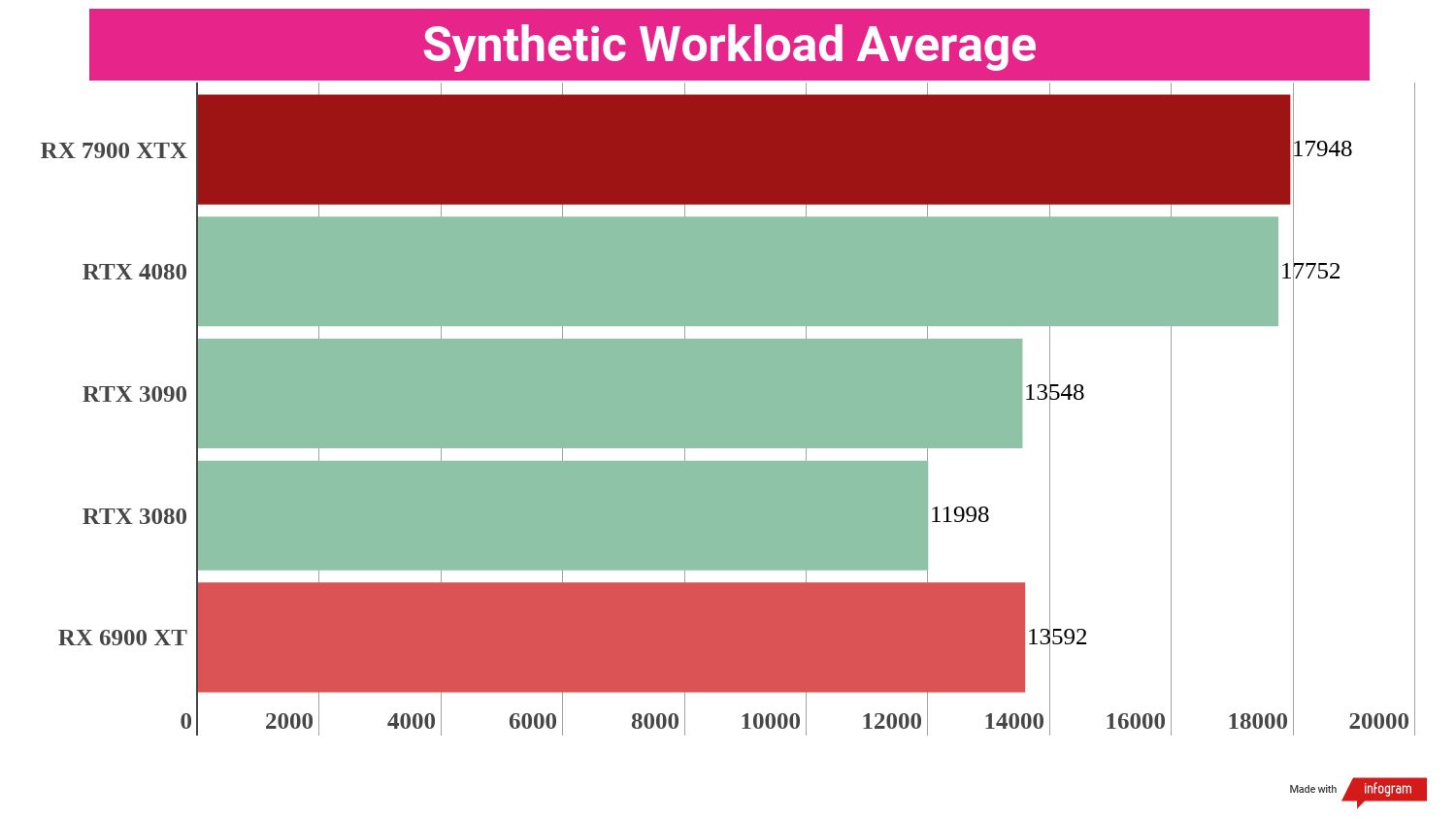
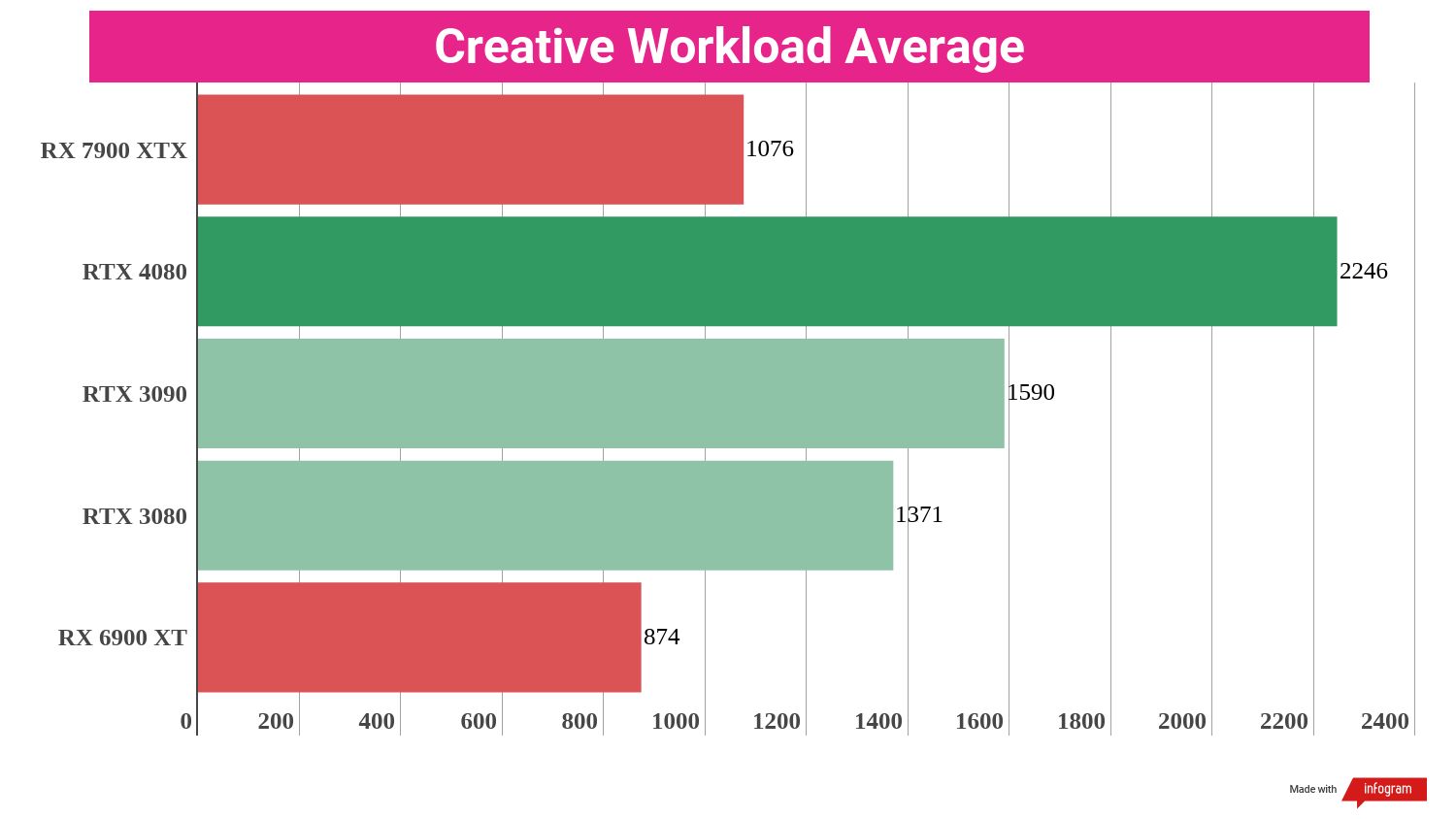
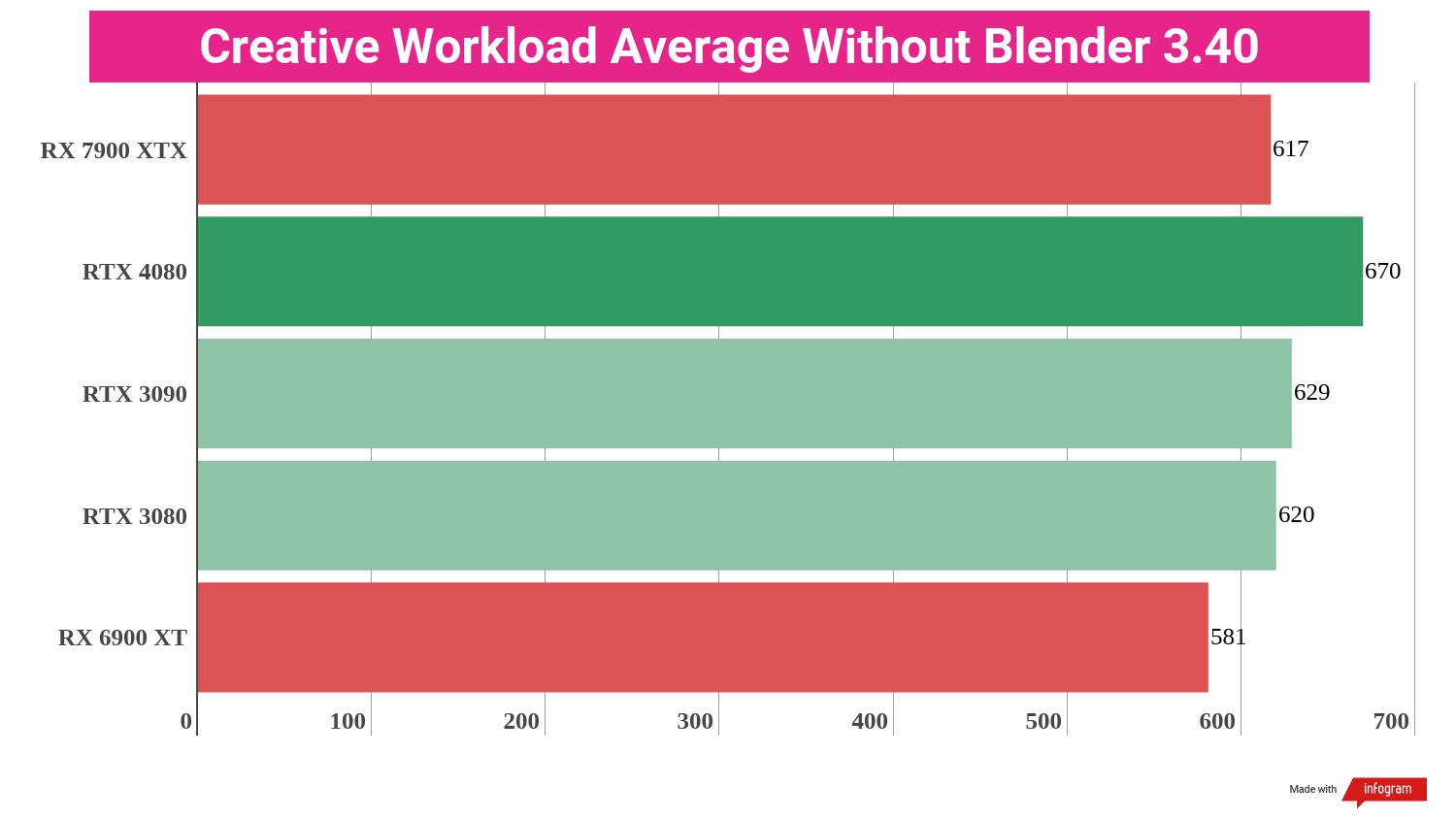
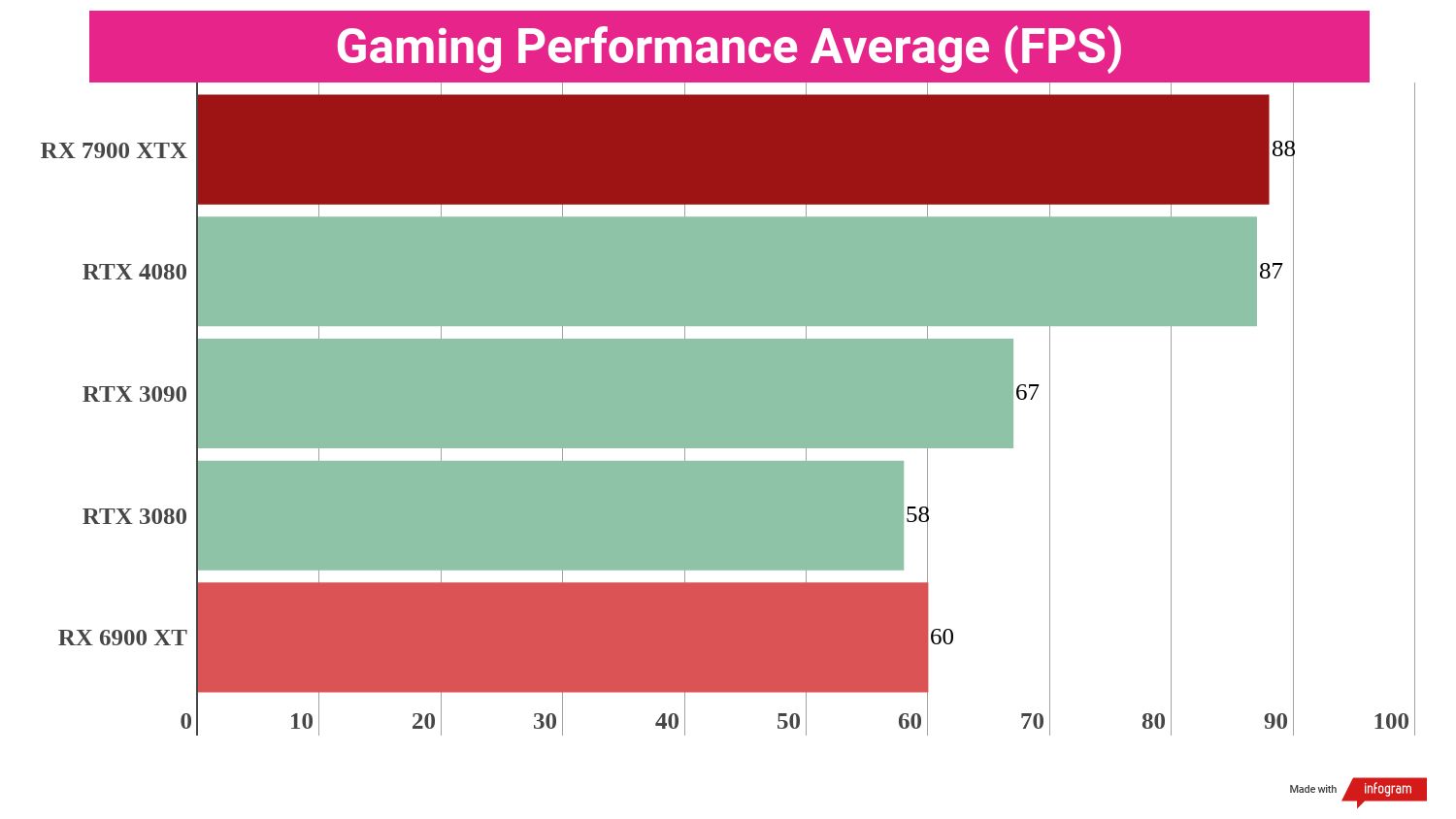

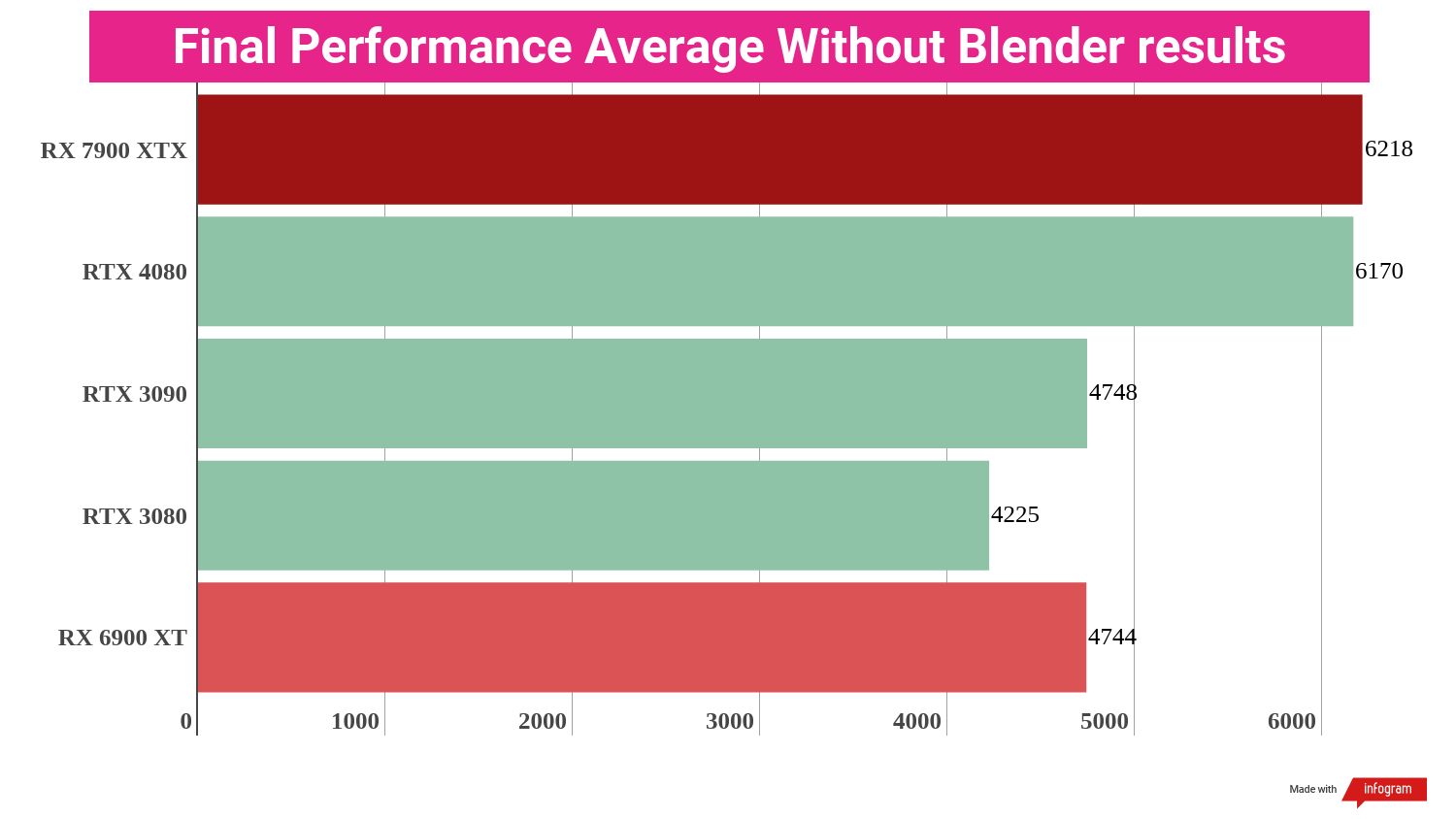
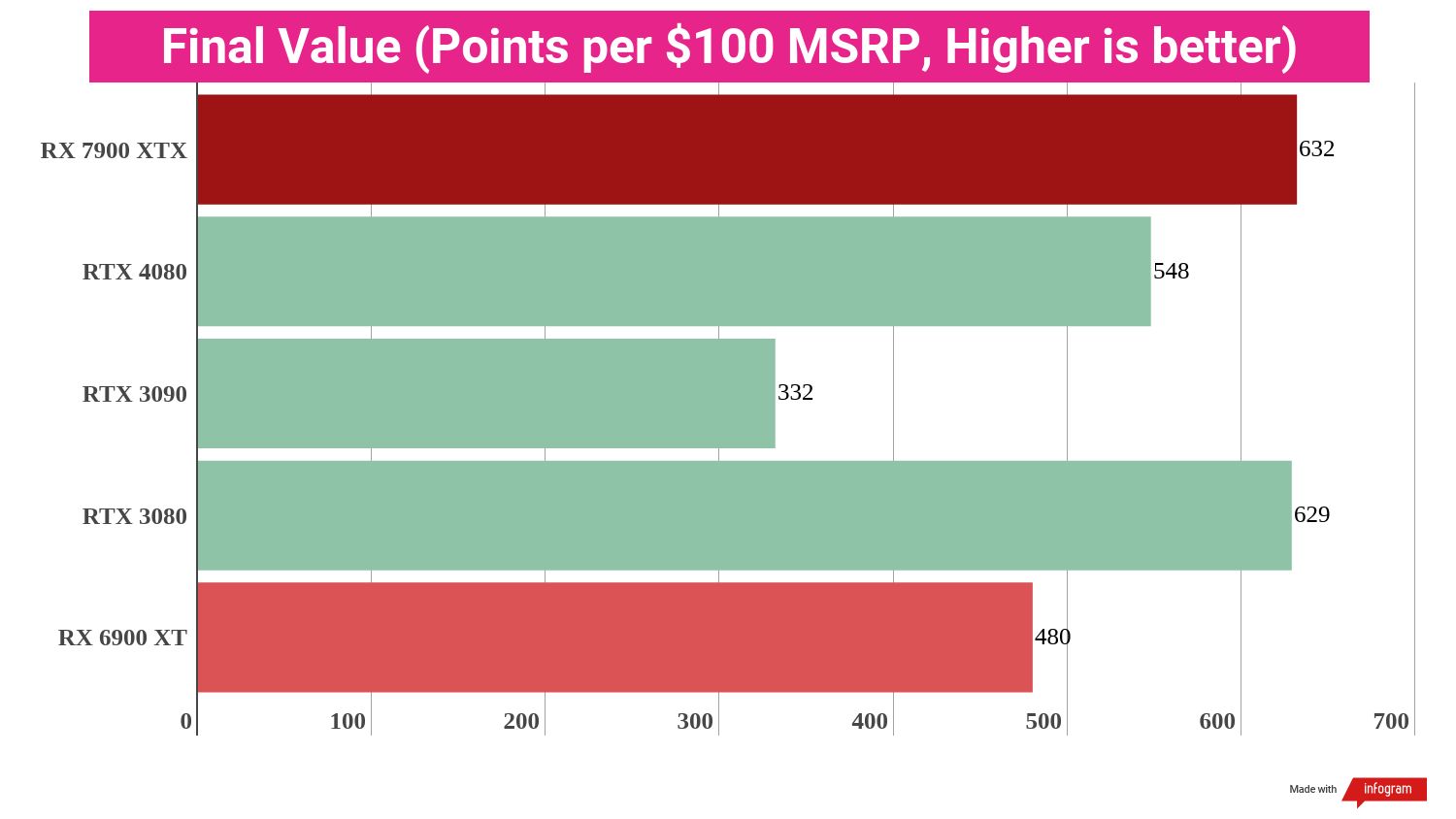
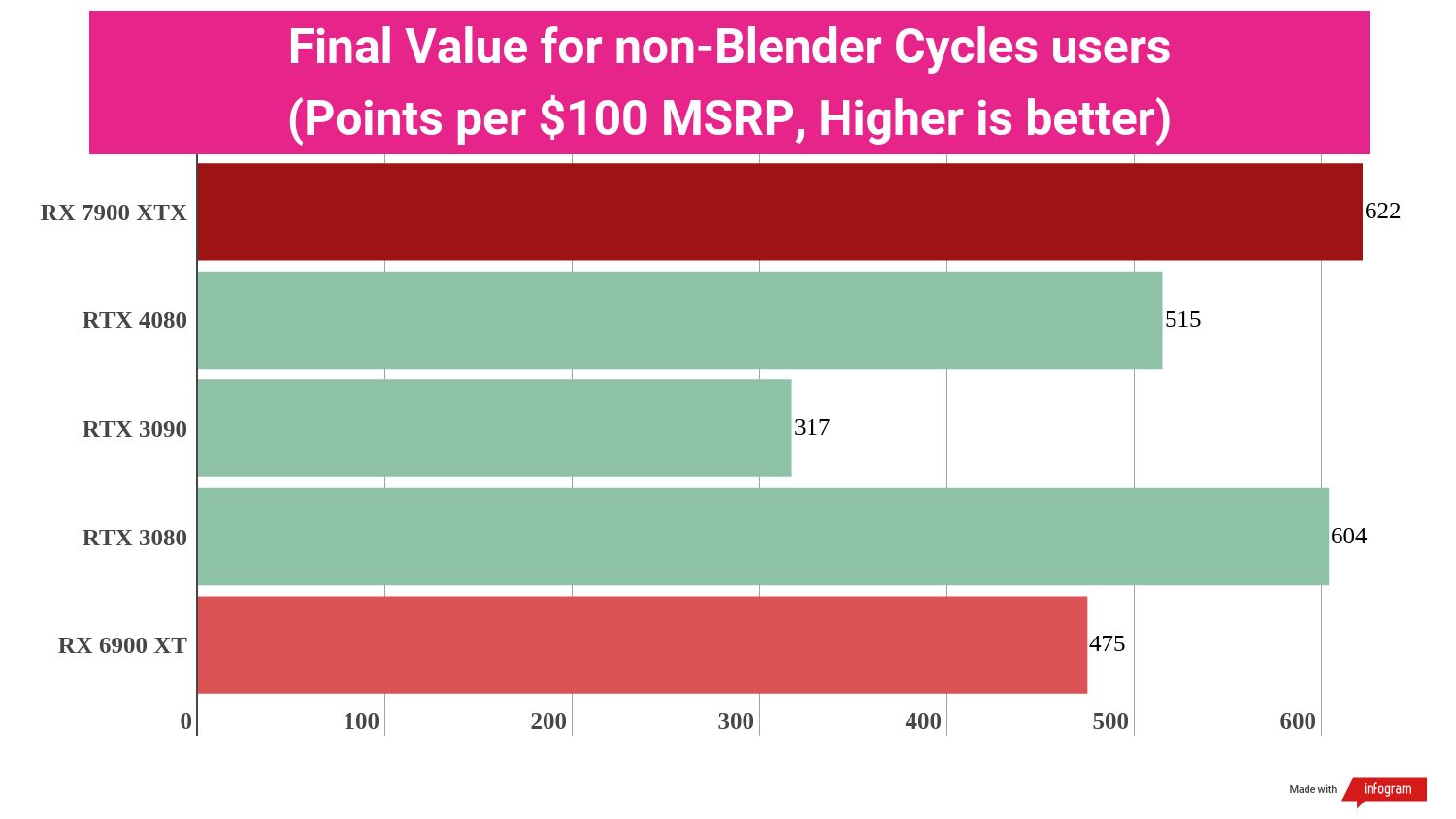
For everyone else – and most of the people who think they want the RTX 4090, if we're being honest – the premium you're paying for those extra features on both the RTX 4080 and RTX 4090 are hard to justify when the RX 7900 XTX is right there.
The only workload where the RTX 4080 seriously scores a clean hit on the RX 7900 XTX is in Blender, and that's a pretty niche app. Take Blender out of the mix, and the RX 7900 XTX beats the RTX 4080 in gaming while coming within striking distance on other, non-Blender creative apps like Adobe Premiere and Handbrake.
All the while, it does so for 16.6% less than the RTX 4080's MSRP. There's just no question that the AMD RX 7900 XTX is the better graphics card overall and for a premium GPU, its price is digestible in a way that the RTX 4080's simply isn't. If you really need Blender or DLSS 3 Frame Generation, just go ahead and splurge on the 4090. Everyone else looking for a premium GPU should be buying the RX 7900 XTX instead. Hell, let the crypto miners have all the RTX 4080s for all the good it will do them.
- Performance: 5 / 5
Should you buy an AMD Radeon RX 7900 XTX?
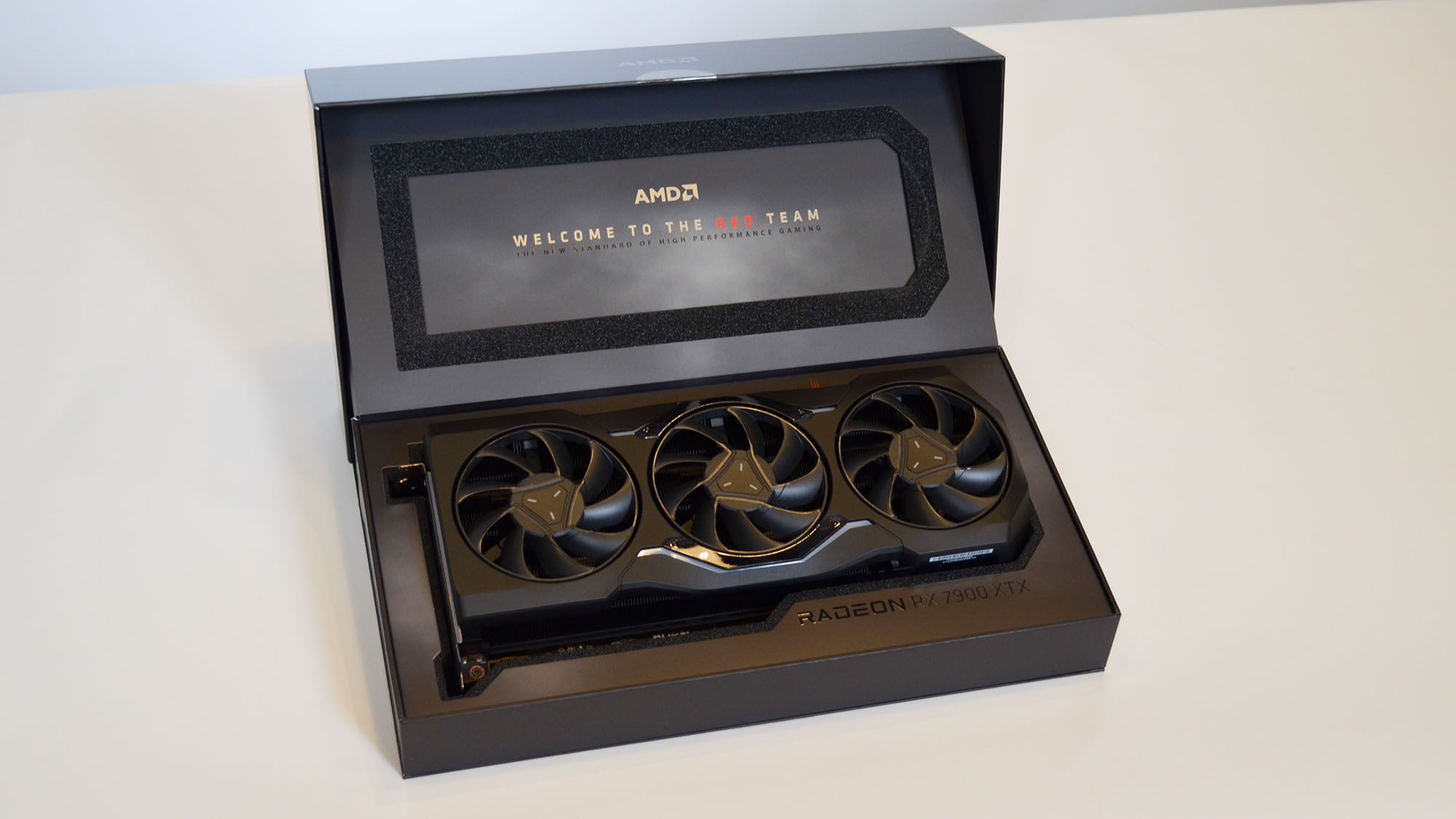
Buy the AMD Radeon RX 7900 XTX if…
You want a premium graphics card for under a grand
While the $999.99 MSRP on the RX 7900 XTX is really stretching the meaning of "under $1,000", this is still a legally true statement, and it's not one that Nvidia can say right now.
You want outstanding 4K gaming performance
Thanks to maturing hardware and improvements to AMD FSR 2.0, the AMD RX 7900 XT delivers outstanding 4K gaming with settings maxed out.
You want to future-proof your rig for fast 8K gaming
While there really isn't a whole lot of 8K content out there, and even fewer PC games pushing into that frontier, the RX 7900 XTX is prepared to tackle it when 8K starts coming into its own over the next few years.
Don’t buy the AMD Radeon RX 7900 XTX if…
You are a Blender head
Seriously, if you need Blender for work or for hobbyist 3D modeling, you should buy the RTX 4090.
You want the fastest possible fps, no matter the cost
FSR 2.0 on the RX 7900 XTX is fantastic, but DLSS 3 with Frame Generation simply outperforms AMD's tech by a wide margin.
You're on a budget
The AMD Radeon RX 7900 XTX is a premium graphics card with a premium price, but cheaper cards are coming through shortly, so it's worth holding out a bit longer if money is tight.
Also consider
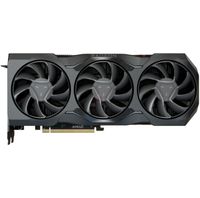
AMD Radeon RX 7900 XT
While not as powerful as AMD's RDNA 3 flagship card, the RX 7900 XT is nearly as capable as any graphics card on the market – especially in gaming performance – at a slightly lower cost. Our review will be up shortly, but we've put this card through all our tests and we can say that it tracks the performance of the RX 7900 XTX pretty close and for a good bit cheaper.
Nvidia GeForce RTX 3080
One of the best graphics cards ever made, the Nvidia RTX 3080 offers excellent 4K gaming along with great ray tracing performance for the latest AAA titles. And with the release of the newest generation of graphics cards, this last-gen champ can likely be scooped up for cheap, making it an even better deal.
Read the full Nvidia GeForce RTX 3080 review
AMD Radeon RX 6950 XT
If you're looking at the RX 7900 XTX and recoiling at the price (which is totally understandable), then take a look at the best AMD graphics card of the previous generation, which is still an outstanding bit of kit that you can probably get deeply discounted now that the 7000-series is available.
Read the full AMD Radeon RX 6950 XT review
AMD Radeon RX 7900 XTX Report Card
| Value | It's hard to call a card costing this much a great "value", but for a premium flagship graphics card right now, this is a fantastic price, especially next to a much more expensive RTX 4080. | 4 / 5 |
| Features & chipset | With new second-gen ray accelerators, new AI accelerators, 24GB VRAM and DisplayPort 2.1 output, AMD has made major headway in matching Nvidia's latest tech. | 4.5 / 5 |
| Design | From the redesigned shroud to the more manageable size, this card looks great while avoiding that whole 16-pin adapter mess. | 5 / 5 |
| Performance | By the numbers, the Radeon RX 7900 XTX outperforms the RTX 4080, and in actual gameplay terms, this card will make your games look gorgeous. | 5 / 5 |
| Total | No card is perfect, but like a team full of aging players and throw-offs from better clubs can somehow come together to win a championship, the AMD Radeon RX 7900 XTX gets everything that matters exactly right, and it comes out the winner in the end. | 4.63 / 5 |
First reviewed in December 2022

John (He/Him) is the Components Editor here at TechRadar and he is also a programmer, gamer, activist, and Brooklyn College alum currently living in Brooklyn, NY.
Named by the CTA as a CES 2020 Media Trailblazer for his science and technology reporting, John specializes in all areas of computer science, including industry news, hardware reviews, PC gaming, as well as general science writing and the social impact of the tech industry.
You can find him online on Bluesky @johnloeffler.bsky.social
